Richard Strauss – his BIOGRAPHY and his PLACES
Richard Strauss a biography in words and pictures.
The places where Strauss worked and the most important people of his life.
Biographic timetable (Click for more informations)
BIRTH IN MUNICH AND WUNDERKIND YEARS
Richard Strauss was born in Munich in 1864 into a musical family. His father was a well-known horn player of the Munich Court Opera, who became known as an orchestral musician through his not unclouded relationship with Richard Wagner. On his mother’s side, Richard was related to the Pschorr family, co-owners of the long-established Hacker-Pschorr brewery.
The relationship between the city of Munich and its famous son can be described as undercooled. A plaque referring to his vanished birthplace in a parking garage is eloquent testimony to this.
Strauss was a child prodigy and began composing at age 6. He wrote his Opus 1, a festive march for large orchestra, when he was only 12. In 1882 he began studying philosophy and art history at the University of Munich, but soon dropped out to devote his professional life to music. His first works were performed at the age of 19.
Richard left Munich at the age of 20 when he met Hans von Bülow, who brought him to the theater in Meiningen.
Richard Strauss as a child:
YOUNG STRAUSS MEETS RICHARD WAGNER
Richard Strauss had an intense relationship with Bayreuth. His father was a horn player in the Munich Court Opera and played in the premieres of “Meistersinger” and “Tristan” in Munich and was frequently in Bayreuth with the orchestra. He was a sharp-tongued critic of Richard Wagner and fought many a battle with the composer. For example, he sat as the first horn player in the orchestra during rehearsals for “Meistersinger” and once even organized a strike after a particularly long day of rehearsals. Wagner took it with humor, saying, “Old Strauss may be an obnoxious fellow, but when he blows the horn, you can’t be mad at him.”
Strauss’s father took his son to Bayreuth in 1882 to see a performance of Parsifal as a reward for passing his Abitur exams, and it was there that Richard met the master in person. Strauss subsequently became an ardent Wagner devotee.
His father, Franz Strauss:
INTERLUDE IN MEININGEN – STRAUSS GETS TO KNOW BRAHMS
The Meiningen Orchestra was one of the best in Europe at the end of the 19th century. The arts-minded sovereign George II, called the “Theater Duke” promoted the arts and Hans von Bülow led it to its greatest flowering from 1880. Bülow became friends with Johannes Brahms, who conducted the orchestra several times and had his 4th Symphony premiered there.
Interestingly, Brahms’ potential successor was also present in Meiningen, for Brahms met Richard Strauss in Meiningen during these years, who became Bülows Kapellmeister in Meiningen in 1885. Brahms is also said to have conceded to Strauss a “Ganz hübsch, junger Mann” (Very handsome, young man) to his F minor symphony (which, from Brahms’ mouth, was a compliment).
Strauss until then a Brahmsian, but in this year becomes a Wagnerian under the influence of the concertmaster Ritter, and switched from the symphony to the form of the symphonic poem.
Hans von Bülow:
Johannes Brahms:
Meiningen State Theater
The Meininger Hofkapelle resumed its original name in 2006, the original theater had burned down in 1908 and was replaced by a new building, which restored the original facade through renovation in 2011. The premiere of Brahm’s 4th symphony took place here.
Today, the high-level theater offers both concerts and musical theater.
Meiningen State Theater:
https://www.meininger-staatstheater.de/start/index.html
RETURN TO MUNICH AS THIRD KAPELLMEISTER
At the age of 22 he returned to the Court Opera as third Kapellmeister. After a trip to Italy, he wrote the first symphonic poem (Aus Italien) and began composing “Don Juan” and “Tod und Verklärung”.
During a guest performance in Leipzig Strauss met the singer Pauline de Ahna, she would accompany him to his next place of work, because Strauss was dissatisfied in Munich. After the death of Ludwig II, the theater received less funding and he had to deal with an unloved repertoire. After a dispute, he left Munich again for Weimar (he was not allowed to rehearse Wagner’s opera “the Fairies”).
Richard Strauss as a 22 year old:
CONDUCTOR OF THE TANNHÄUSER PREMIERE IN BAYREUTH
Strauss became an ardent Wagner supporter. He befriended Cosima and in 1889 became assistant conductor to Hans von Bülow. Cosima recognized Strauss’s potential and even wanted to pair him with her daughter Eva, and in 1894 he was allowed to conduct the Tannhäuser premiere in Bayreuth (with his future wife Pauline as Eva).
Cosima Wagner (1905):
CONDUCTOR AND COMPOSER IN WEIMAR – WEDDING WITH PAULINE
In 1889 Strauss took up his post as second Kapellmeister in Weimar. Highlights became, firstly, the many Wagner performances of the passionate Wagner devotee.
And secondly, on May 10, 1894, Strauss was allowed to successfully premiere the opera “Hansel and Gretel” by the former Wagner assistant Humperdinck, in which Strauss’ later wife Pauline sang Hansel. The work was first performed on December 23 and has since been considered a Christmas fairy tale, even though the action is set in summer and the gingerbread is the only reminiscence of Christmas.
Pauline de Ahna also sang at the premiere of Strauss’s first opera “Guntram” in Weimar. But the knight opera, set in Wagnerian manner, was not a success, while his symphonic poems were. Strauss developed a steady concert schedule throughout Germany to get his tone poems on the playbills.
In 1894, Pauline and Richard were married. They subsequently left Weimar and returned to Munich.
National Theater Weimar:
https://www.nationaltheater-weimar.de/
Pauline de Ahne, Strauss’ wife:
ANOTHER RETURN TO MUNICH – SHORTLY THEN STRAUSS LEAVES MUNICH IN ANGRY
As a composer, Strauss began to turn back to symphonic poetry in Munich after the failure of “Guntram” and wrote Till Eulenspiegel as a symphonic poem, which should have been an opera. The premiere took place in Cologne, which under Wüllner developed into an important Strauss city. The applause was enormous and the work immediately caught on. Subsequently, Strauss wrote every yeara new successful symphonic poem in Munich.
Strauss had returned 1894 to Munich as Kapellmeister, but he left Munich after 4 year in anger when he was not considered for the succession of the late director of the Court Opera, Hermann Levi. His relationship with Munich soured and his most important cities artistically became Dresden, Berlin and Vienna.
In 1897 his son Franz was born.
Richard Strauss:
20 YEARS AS DIRECTOR OF THE ROYAL OPERA UNTER DEN LINDEN
Richard Strauss lived in Berlin for twenty years from 1898. He started as Kapellmeister and became General Music Director in 1908 (together with Karl Muck). However, he reduced his workload in Berlin to 50% and from then on the Strausses spent a lot of time in their newly built villa in Garmisch, plus several trips abroad.
In 1901, Strauss became president of the Central-Verband Deutscher Tonkünstler, the forerunner of the german GEMA, which was committed to the exploitation rights of musicians.
Strauss was hired as Kapellmeister at the Opera “unter den Linden” and wanted to stage his “Guntram” and the “Feuersnot” there, which was not approved. Strauss then decided not to have his future operas performed in Berlin. In fact, Dresden and Vienna became the Strauss cities for his future operas. Even at the only premiere in Berlin, his Alpine Symphony, the Dresdeners sat in the orchestra.
Strauss family in their Berlin apartment:
https://www.nationaltheater-weimar.de/
State Opera House Unter den Linden (formerly Royal Court Opera House).
The State Opera is a magnificent opera house and an outstanding history. The gallery of directors includes names such as Giacomo Meyerbeer, Otto Nicolai, Erich Kleiber, Wilhelm Furtwängler and Joseph Keilberth. Daniel Barenboim has been the director of this Berlin institution since 1992.
The building was rebuilt in 1843 after a fire as a magnificent imperial structure and served as a court opera. After the fall of the empire, it changed its name to the Staatsoper.
View of the State Opera House:
It was badly damaged in 1941, but was immediately rebuilt in 1942 to raise the morale of the people.
After the air raid:
Strauss apartment Heerstrasse
Although he wrote positively about his time in Berlin in his memoirs, he did not really warm to the imperial city; despite living here for 20 years, he was only a tenant.
During the three years he lived in three upper-class apartments, all in upscale Charlottenburg. The first apartment on Knesebeckstrasse no longer stands, but the corner house at Heerstrasse 2 (then Kaiserdamm 39) still does. A plaque commemorates the famous resident who occupied the fourth floor.
Richard Strauss apartment at Heerstrasse 2:
GRAND USA TOUR – STRAUSS CONQUERS THE NEW WORLD
In 1904, Pauline and Richard travelled by ship to the USA, where the composer receives ovations everywhere. 35 concerts in 2 months with countless appointments leave Strauss no free minutes.
The premiere of the Sinfonia Domestica takes place in Carnegie Hall. He is not particularly impressed about the New York orchestra (“anarchist gang”), while the Boston musicians evoke his delight. A special experience is a concert in the Wanamaker department store, where a floor has been cleared. In Germany, however, the concert provokes sniffy reactions.
The trip is also productive for his wife Pauline, who is celebrated as a lieder singer at recitals.
Strauss in NY:
BREAKTHROUGH AS OPERA COMPOSER IN DRESDEN – STRAUSS BECOMES AVANT-GARDIST
Richard Strauss first saw the theater play “Salome” in 1902 in a production by Max Reinhard and three years later created an expressionist sound world that seemed to break with everything previously known. Despite the now thirteen years that had passed since the first performance of Oscar Wilde’s play, the piece, now set to music as an opera, met with open hostility from traditionalists (see below). But the premiere in Dresden became a sensation and “Salome” began its triumphal march around the world.
Dresden became indisputably the Richard Strauss city. The fact that so many of Strauss’ works were premiered in Dresden came about by chance. Strauss was Kapellmeister in Berlin and wanted to premiere his opera “Feuersnot” there. This was not possible for censorship reasons and so he went to the Semper Opera in Dresden, where the brilliant Ernst von Schuch was able to perform this work for the first time, and later also “Salome”, “Elektra” and “Rosenkavalier”.
Premiere of “Salome”:
https://www.nationaltheater-weimar.de/
Semper opera
Dresden became indisputably the Richard Strauss city. The fact that so many of Strauss’ works were premiered in Dresden came about by chance. Strauss was Kapellmeister in Berlin and wanted to premiere his opera “Feuersnot” there. This was not possible for censorship reasons and so he went to the Semper Opera in Dresden, where the brilliant Ernst von Schuch was able to perform this work for the first time, and later also “Salome”, “Elektra” and “Rosenkavalier”. Several Strauss weeks soon followed, and with conductor Fritz Busch, further premieres were added with “Intermezzo” and “Die ägyptische Helena” in the 1920s and “Arabella” in 1933.
The Semperoper, which reopened in 1985, honored Richard Strauss with a bronze bust that can be found in the foyer.
Strauss’ bust:
Musical background: the shocker of the Dresden premiere of Salome
The subject matter of a 16-year-old virgin kissing the severed head of John the Baptist was received as an outrageous perversion, or rather the result of moral depravity, when Wilde’s novel was published in 1892 and caused a solid scandal. Thirteen years later it was no different. Even the singers’ rehearsals were harbingers of the coming turmoil. The Salome of the premiere, Marie Wittich, at first refused to sing the part (“I am a decent woman”). Strauss mocked the reaction of “Aunt Wittich” and threatened to move the premiere to Berlin.
The work was openly rejected at both the German and Austrian courts. The first performance of Salome at the Dresden Court Opera on December 9, 1905, became a sensation. Although the critics were highly disdainful of the work, the audience was enthusiastic about Strauss’s “shocker” and “Salome” began its triumphal march around the world.
Salome’s unveiling dance of the seven veils stirred up emotions, and at the premiere Marie Wittich refused to perform the erotic dance herself. It was danced by a dancer and this tradition has subsequently endured. One of the few exceptions was the American soprano Maria Ewing. She sang and danced the role, and did so consistently. One veil after another falls to the floor until she actually presents herself stark naked.
Dance of the seven veils:
https://opera-inside.com/salome-by-richard-strauss-the-opera-guide/#Der
CONSTRUCTION OF THE VILLA IN GARMISCH
In 1908 Strauss moved into the newly built house in rural Garmisch-Partenkirchen, financed with the proceeds of his “Salome“. The villa served first as a summer retreat and later as a residence, in whose study most of the works from “Elektra” onward were written.
Strauss’ villa in Garmisch Partenkirchen:
3 generations Strauss:
STRAUSS DOUBLES DOWN WITH ELEKTRA
Elektra was the first collaboration with Hugo von Hofmannsthal, which was followed by a 20-year influential artistic partnership.
No one would deny the kinship of “Elektra” with “Salome.” The two works are too similar. The closeness concerns the expressiveness of the music as well as the characters of the opera. The respective main characters Elektra/Salome, Klytämnestra/Queen and Ägisth/Herodes are elective relatives in terms of content and music and the plots show great parallels. This closeness to Salome caused Strauss to hesitate when Hugo von Hofmannsthal presented him with Elektra as material for a new opera. Finally Strauss realized that the material offered him exactly the scenes he needed for his music and he set to work.
The role of Elektra occupies a special position in opera literature. No other character, not even that of Salome or Lady Macbeth, has ever been musically set to music so excessive in its drive and obsession. Elektra is non-stop on stage and always the center of the stage action. Her voice must sing ceaselessly against a large orchestra to make one feel the threshold of madness. After less than 2 hours the stage curtain falls. The singer of Elektra (and the listener) could probably not be expected to do more.
The opera was received with reserve at its premiere. Although it was quickly performed in many opera houses, reactions remained mixed. It was acclaimed by the avant-gardists, and critically received by the conservatives.
Strauss and von Hoffmansthal:
FROM THE AVANT-GARDIST TO THE NOSTALGIST
The Rosenkavalier
After “Elektra” and “Salome,” Strauss literally thirsted to create a cheerful work. Hofmannsthal already had a material at hand (“Cristina’s Journey Home”), but they soon switched to the new subject and called it “Ochs von Lerchenau” at the beginning. It was set in 1740s Vienna and inspired by Mozart. They called it “our Figaro” because the parallels between the two works are striking. In addition to the rococo style, the parallels between the Countess and the Marschallin, as well as Cherubino and Octavian, are especially striking to the eyes and ears.
Many of Strauss’s fellow artists could not believe it. How could Strauss write such a backward-looking work. Otto Klemperer simply called it “sugar water.” After the avant-garde Elektra and Salome, for avant-garde artists it was a throwback to a world they had thought was behind them. For Strauss’ it was a return to the musical realm of the tonal, and henceforth he was branded a “conservative” by the avant-garde. Strauss had made up his mind: he did not want to go the way of Webern, Schoenberg or Stravinsky. The audience cared little for this criticism and the opera was enthusiastically received from the start. The response was so enormous that special Rosenkavalier trains had to be used from Berlin to Dresden.
The premiere in Dresden:
The total work of art of the premiere
the outstanding stage designer Alfred Roller (whose collaboration with Gustav Mahler at the Vienna Court Opera can be mentioned as congenial) was engaged early on to design the sets and figures. His sets and the director’s book he designed (and in some cases overturned the stage directions of Strauss and Hofmannsthal) were expressly accepted by the creators and are still standard-setting today, influencing all productions of this opera. Most notable are his style-setting rococo motifs of Vienna in the 1740s. It was the time of Maria Theresa, which for the audience at the premiere represented the heyday of the Habsburg monarchy, whose scenery Roller meticulously recreated. The stage rehearsals for the premiere were supervised by none other than Max Reinhardt, who was engaged at Strauss’s request, but whose name was not mentioned at the premiere, possibly for anti-Semitic reasons. The premiere itself was conducted by Ernst von Juch, a conductor whom Strauss held in high esteem. Strauss gave many instructions by letter and also conducted some rehearsals personally in the weeks before the premiere.
The creative team of the premiere:
WAR YEARS
The war years gave birth to the work “Ariadne auf Naxos” in 1916 as a collaboration with Hoffmansthal and Reinhard, a middle ground between opera and drama, which was premiered in Stuttgart.
Financially, the world war was bitter for Strauss, since he had lost all his assets except for his villa in Garmisch, since the money deposited in London had been confiscated as “enemy property”.
DIRECTOR AT THE VIENNA STATE OPERA
Along with Dresden, Vienna was Strauss’s most important artistic station, two of his operas were premiered (“Ariande” and the 2nd Version of “Frau ohne Schatten”) in the State Opera.
He held the office of State Opera Director for five years (1919-1924) and Hoffmansthal, his most important librettist was Viennese.
In addition, many of his Viennese operas were performed in Viennese settings (e.g. “Rosenkavalier” and “Arabella”). In 1924 the city of Vienna awarded him the honorary citizenship.
Strauss and Schalk, the co-directors of the State Opera:
Strauss Schlössel (Little Strauss castle)
Strauss had a prestigious 3-story house built on Jacquigasse by a renowned architect. The beautiful building still stands but can only be viewed from the outside as it is the seat of the Dutch embassy.
Strauss- Schlössel:
INDEPENDENT ARTIST IN GARMISCH AND FOUNDATION OF THE SALZBURG FESTIVAL
With the end of his tenure as director of the State Opera in 1924, Strauss began his time as a independent artist. Garmisch definitely became the Straussens’ main residence. There he enjoyed family life (he composed a parody of his own family with the “Intermezzo”) and cultivated his passion for skat. He traveled extensively as a concert performer with his works.
Strauss, together with Hoffmannsthal, was very committed to the establishment of the Salzburg Festival. They wanted to breathe life into the cultural life of a depressed Europe with glittering festivals, and Strauss conducted the first opera performance (Don Giovanni) himself with his Vienna State Opera Orchestra. He and Schalk conducted 4 Mozart operas in the first edition in 1922 and Hoffmansthal presented his Weltentheater.
After Thurn’s withdrawal, Strauss takes over the presidency of the Festival Association.
1922 Rehearsals for Don Giovanni in Salzburg:
Richard Strauss Villa
The villa on Zoeppritzstraße is still inhabited by the descendants of the family and cannot be visited. From the outside, one can recognize the bay window where Strauss used to make his beloved skat rounds (Hans Hotter was a frequent guest), a metal bird with the same name (Strauss = english ostrich) sits on the garden house and the garden gate bears Strauss’ initials.
In 1923, his bourgeois opera Intermezzo was premiered. Strauss wrote the libretto and music himself right away, as it was an autobiographical comedy set in the villa of the court conductor Storch. The oriel of the villa became famous when it was recreated in the stage set in the skat scene of the premiere. In the process, he composed a fortissimo in G major for a strong hand!
Richard Strauss Villa:
RECONCILIATION IN BAYREUTH
The once friendly relationship between Cosima Wagner cooled with Strauss’ opera Salome, about whose musical style Cosima was not at all enthused (“an opera about a Jewish girl”). Later the two made up, and Strauss stepped in as conductor in 1933’s “Parsifal” when Toscanini left Bayreuth in a rage.
With Winifred Wagner (1933):
THE FIRST PREMIERE OF A STRAUSS OPERA IN MUNICH
Strauss did only reconcile with his hometown when he was older. It was not until his friend Clemens Krauss took over the direction of the Munich Opera (presumably through Hitler’s mediation) that two premieres took place there (Friedenstag in 1938, and Capriccio in 1942). Particularly impressive was his last appearance in 1949, shortly before his death, when he conducted the second act of his Rosenkavalier in Munich’s Prinzregenten Theater as a very old man.
Strauss with Clemens Krauss:
Richard Strauss Fountain
This fountain in honor of the composer in the pedestrian zone was inaugurated in 1962. It contains scenes from the opera “Salome”. Because of the ancient theme and the location in front of a Renaissance building, the artist chose a column shape for the bronze fountain.
Richard Strauss Brunnen:
Bavarian State Opera
Only his twelfth opera was premiered in his hometown. Strauss was offended that he was passed over for the post of general music director in 1886. He even wrote a reckoning with his hometown with his opera “Feuersnot”. Strauss was offended that he was passed over for the post of general music director in 1886. He even wrote a reckoning with his hometown with his opera “Feuersnot”.
Bavarian State Opera:
Munich Opera festival
This festival has existed since 1875, started as Wagner and Mozart Festival. It has opened up to other composers and Strauss is now one of the most important composers along with Mozart and Wagner. The festival in June and July has reached great dimensions, opera, concert, ballet are part of it. Highlights are the two opera premieres in the State Opera, Opera for All in Max-Joseph-Square and the ballets in Prinzregenten-Theater.
Max-Joseph-Square:
https://www.staatsoper.de/opernfestspiele.html
NAZI – AND WAR YEARS
In 1933 Strauss becomes Reichsmusikdirektor in the Nazi administration. Strauss has to adapt, but also tries to protect Jewish artists. He has contact with Nazi greats, but the Nazis do not trust Strauss. For security reasons, Strauss leaves Garmisch and the family spends the war years in Vienna, where they are under the protection of Baldur von Schirach. Age works such as “Liebe zu den Danäer”, “Capriccio” and the second horn concerto are written.
When the American troops marched into Garmisch, Strauss received them in his garden with documents in hand and was thus able to protect his house from requisition “as composer of the Rosenkavalier”.
Strauss as Präsident of the Reichsmusikkammer:
ODYSSEY IN SWITZERLAND
When the war was over, Germany had the most urgent needs; even Strauss had no means of obtaining coal to heat his villa in Garmisch. In addition, he had to face a denazification procedure that prevented him from accessing the remaining assets. Almost penniless, Strauss decided to leave Germany with his wife for Switzerland, unaware that he was embarking on a 3-year odyssey. There he was supported by Swiss friends who provided him with hotel stays and a certain lifestyle.
He already knew the Verenahof in the spa town of Baden, where he had stayed earlier. At the same time, Hermann Hesse, who had received the Nobel Prize for Literature shortly before, was staying there as a spa guest. Strauss wanted to meet him, but Hesse was irritated by Strauss’ attitude toward the Third Reich. It is not clear whether an encounter took place.
Spa hotel Verenahof Baden:
Four last songs
Strauss, with the help of the Swiss authorities, also managed to get his son Franz to Switzerland in 1947, who encouraged him to compose again. Strauss chose 3 poems by Hesse and one poem by Eichendorff and wrote the trandescent “Four Last Songs”.
Strauss was a difficult hotel guest and he changed his place of residence frequently. He liked to spend his summers in the Engadin, for example at the Hotel Saratz, where he still found the time to compose and write the first two pieces of the Four Last Songs. Full of melancholy about the perished world about his and Pauline’s foreseeable death, he begins there with the composition of the last song of the “Four Last Songs”, the famous Abendrot (Afterglow).
Pontresina:
Richard Strauss on Lake Geneva:
Richard Strauss was exonerated in the denazification proceedings and still remained in Switzerland for treatments. In May 1949 he left the country to return to his beloved Garmisch.
RETURN TO GARMISCH AND DEATH
After his return to Garmisch from exile in Switzerland in May 1949, Strauss had only a few months left. He received many honors in that short time.
After suffering a stroke in August, the last great opera composer in the history of music died on September 8, 1849, of kidney failure in his bed after a severe heart attack he had suffered a month earlier. He is followed 8 months later by Pauline.
Cemetery Garmisch-Partenkirchen
On September 8, 1849, the last great opera composer in the history of music died in his bed after a severe heart attack he had suffered a month earlier.
Richard Strauss’ abdication took place in Munich, his urn lies in the family grave in the Garmisch cemetery.
Richard Strauss’ tomb:
Richard Strauss Institute & Museum
Today, the Strauss Villa is home to the Richard Strauss Institute. In this research facility there are also 2 rooms that are open to the public. An overview of his life is offered and headphones invite you to immerse yourself in his work.
http://www.richard-strauss-institut.de/
Richard Strauss Institute:
Richard Strauss Festival
In 1989, on the 40th anniversary of his death, a festival was founded, performing songs, orchestral and chamber music works by Strauss and, in the meantime, by other composers during several days in June.
http://www.richard-strauss-festival.de/
Strauss Factsheet
Where was Strauss born?
Munich
What was his wife's name ?
Pauline de Ahna
In which places did Strauss live?
Munich, Meiningen, Weimar, Berlin, Vienna, Garmisch, in various hotels in Switzerland after the war
Which were his most important works?
His symphonic poems and his operas, his horn concertos and the four last songs
Where did Strauss die ?
In his house in Garmisch
Where is his grave?
In the cemetery in Garmisch-Partenkirchen
What was the death age of Strauss?
85 years
What was the cause of Strauss' death?
Kidney failure after a heart attack
What was the date of Strauss' death?
September 8, 1949
Who was Strauss' most important rival?
Strauss did not cultivate rivalries. There was a certain rivalry, but also artistic friendship, with Gustav Mahler, who like him was a composing conductor and was successful in both fields. However, they got along quite well artistically.
With which artists did Strauss get along particularly well?
Strauss was a Wagnerian, he met him once in person but he was only 19 when Wagner died
Who were Strauss' children?
Franz was born from his marriage with Pauline de Ahne
What were the names of Strauss's librettists?
The most important artistic collaborations were with Hugo von Hoffmannsthal (Elektra and Rosenkavalier, among others), with Joseph Gregor (3 late operas) and Stefan Zweig (Die schweigsame Frau). Richard was 3 times his own librettist.


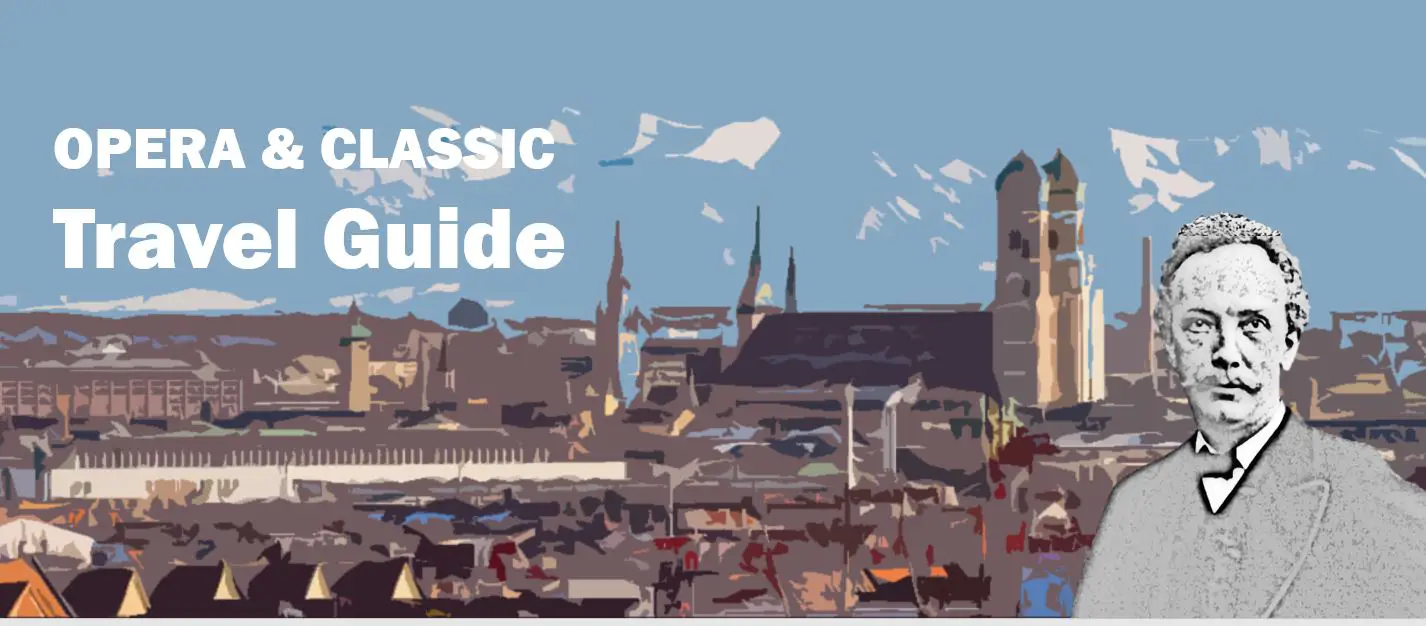
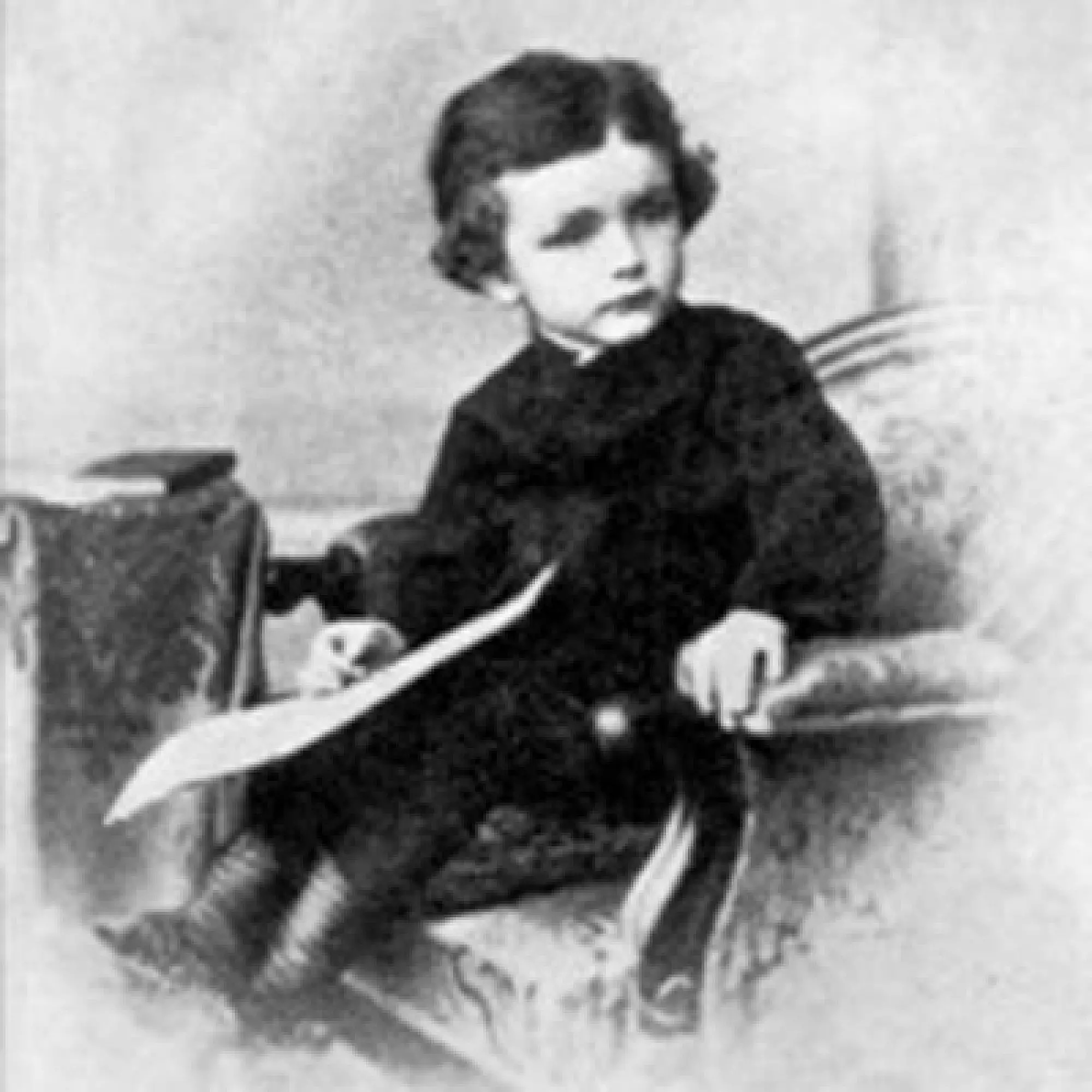
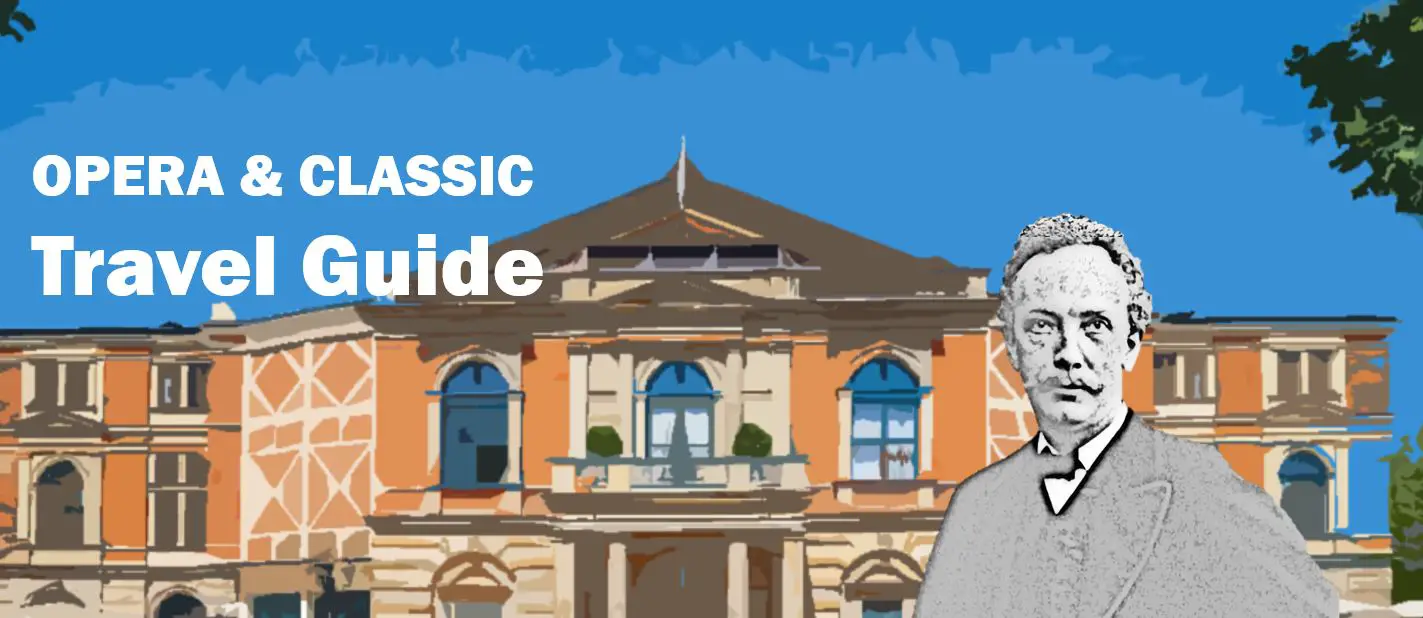
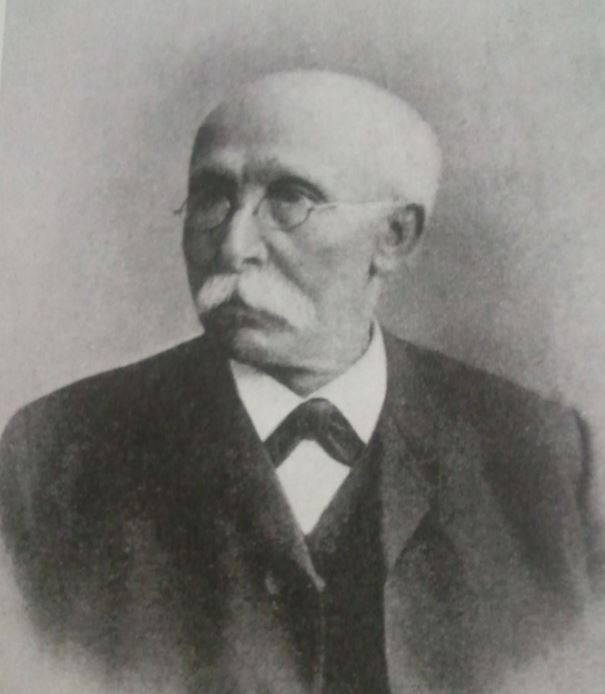
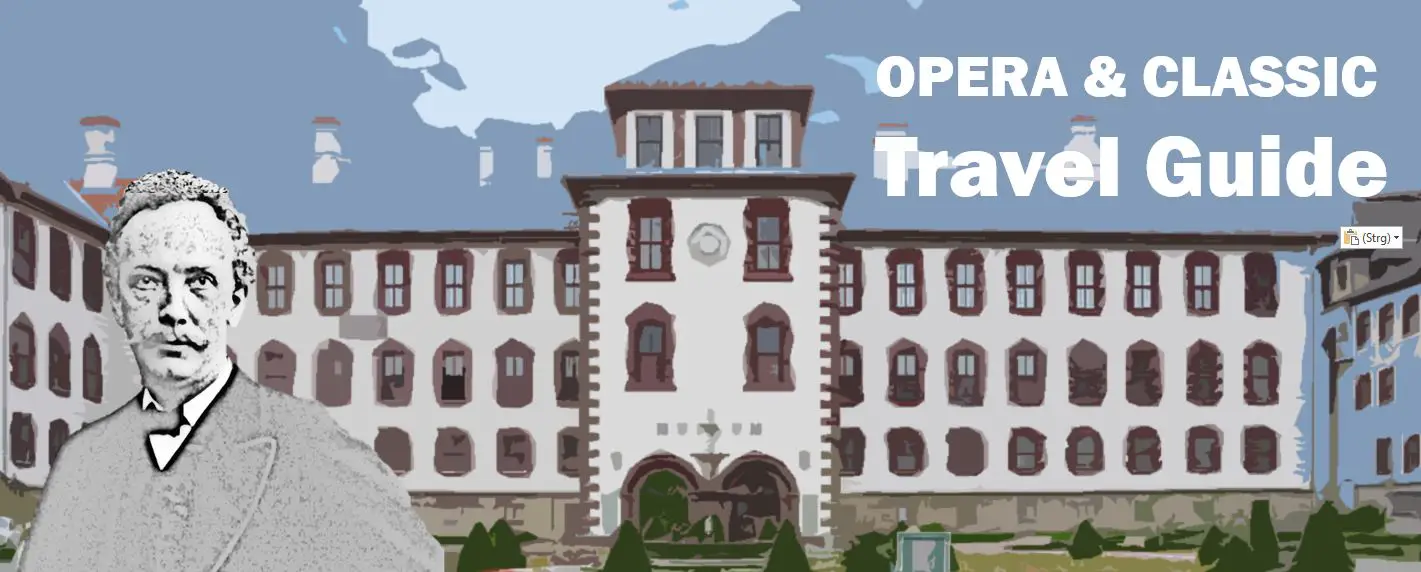
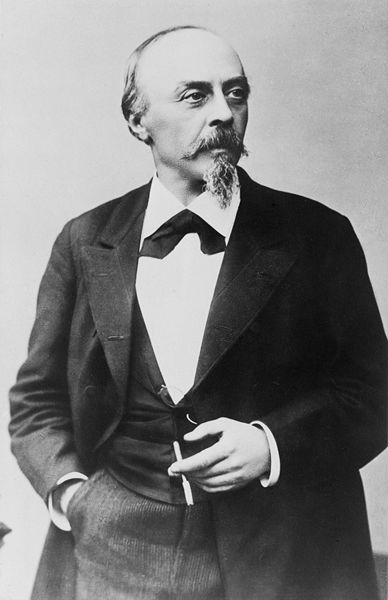
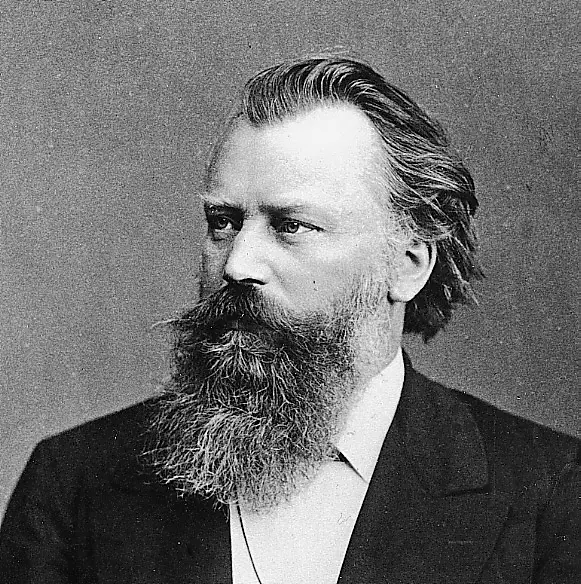
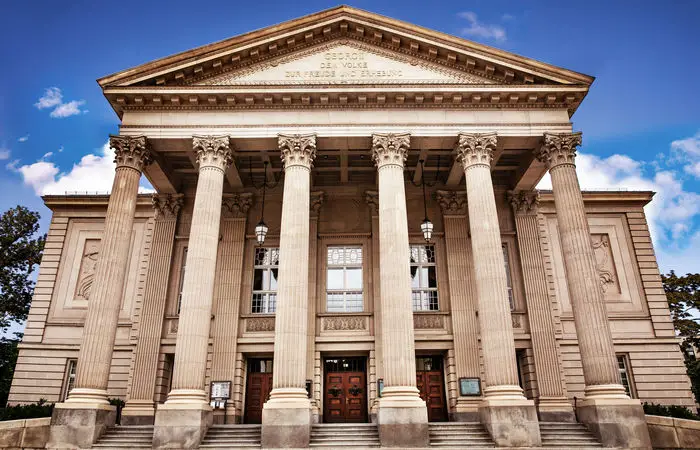
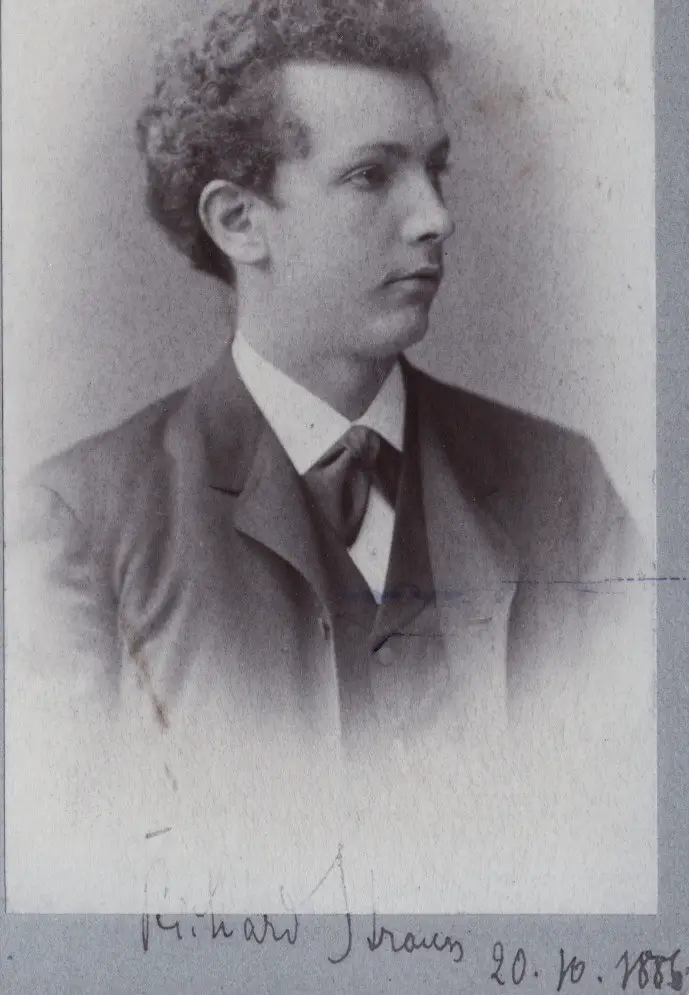
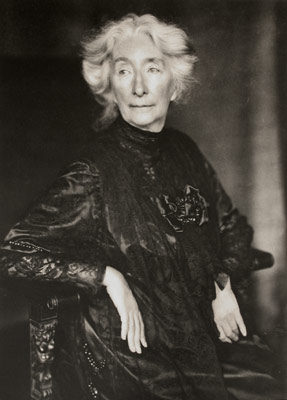
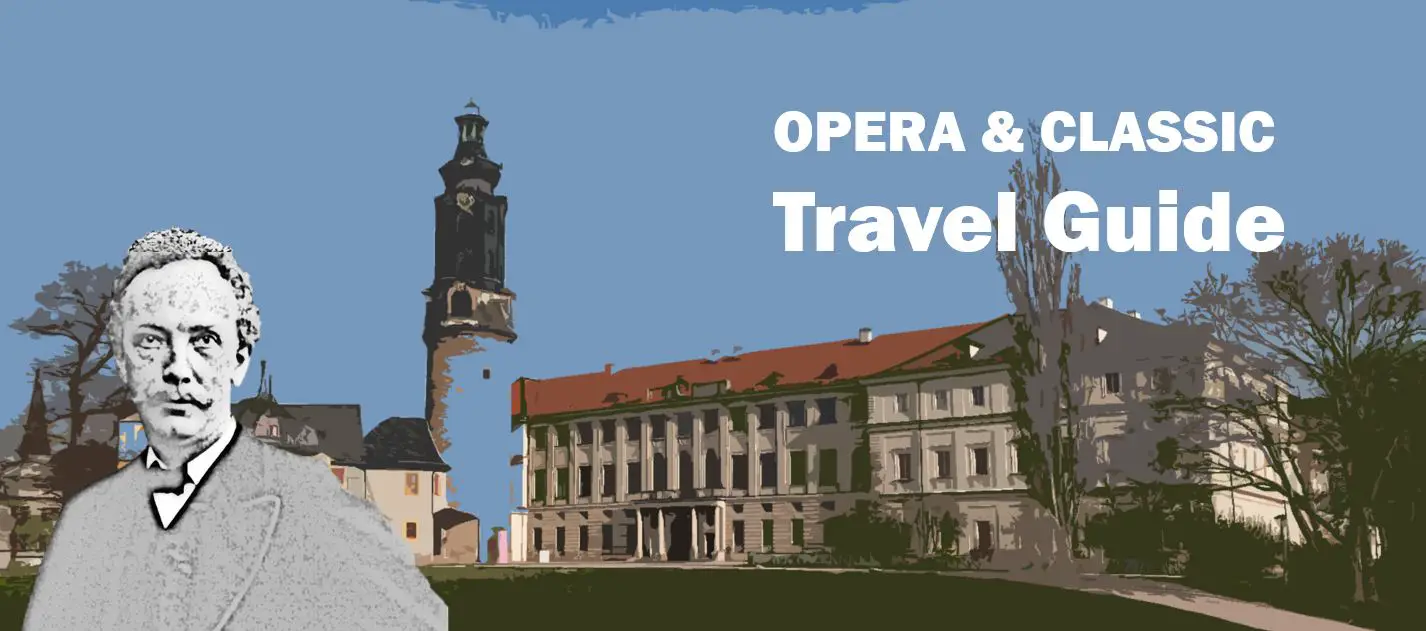
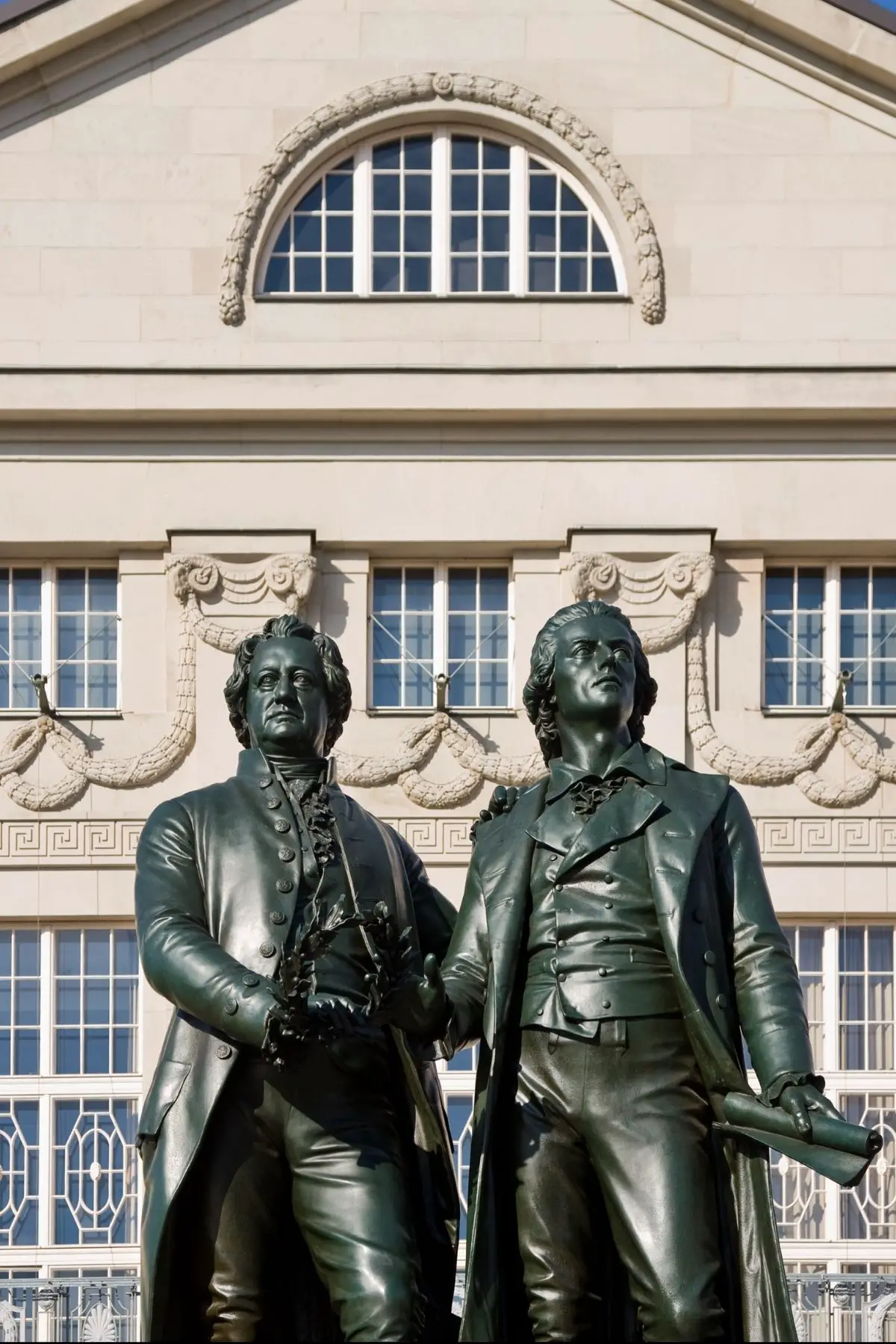
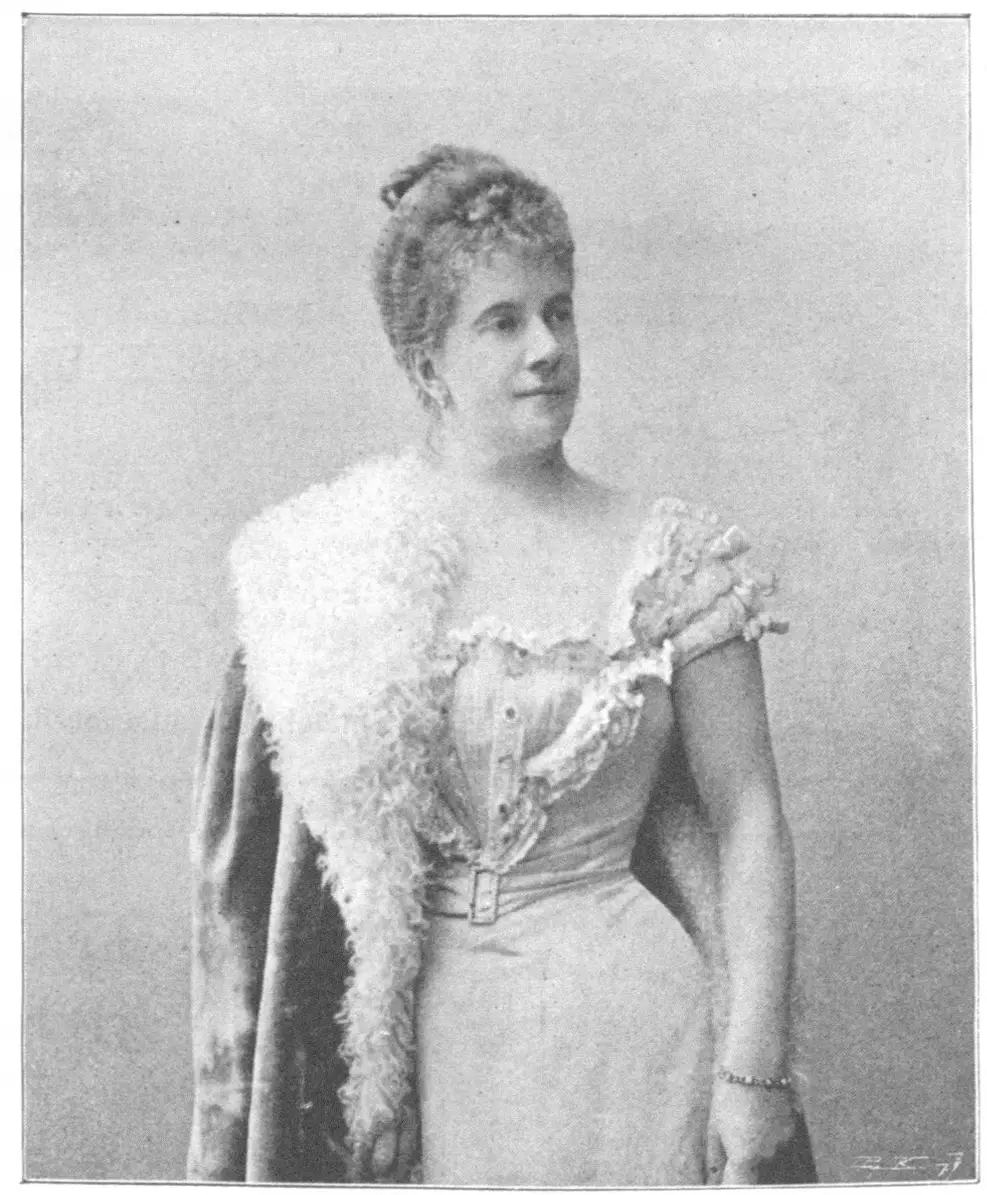
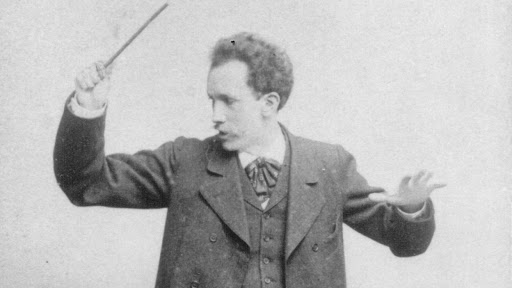
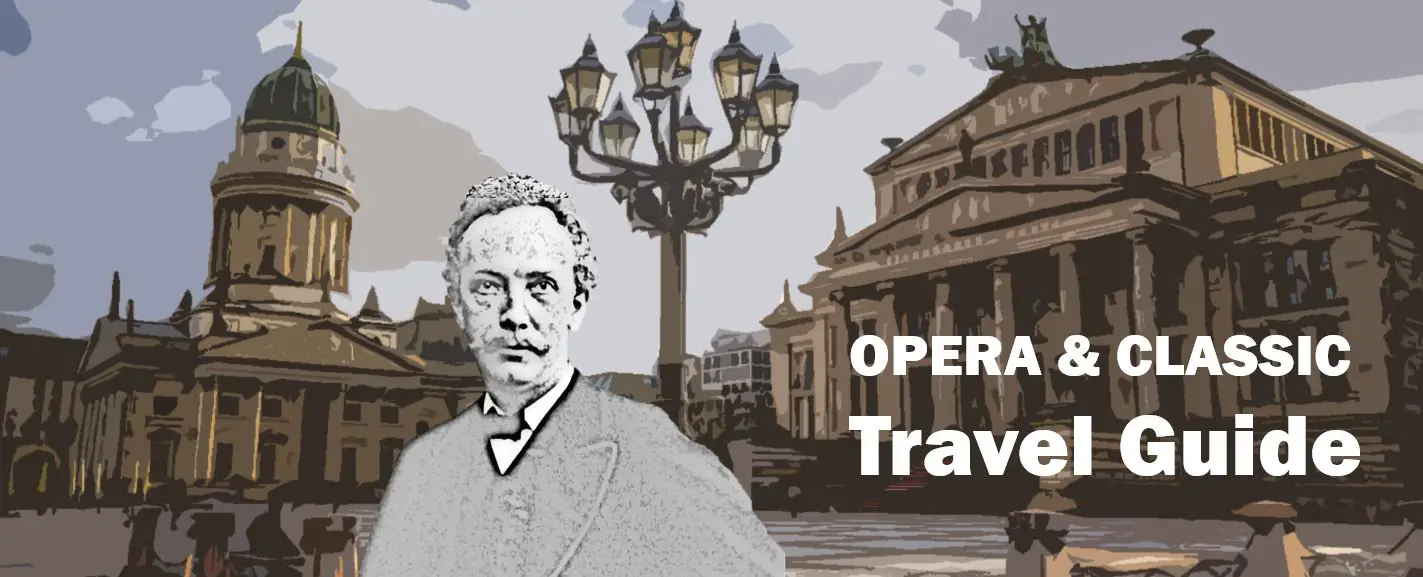
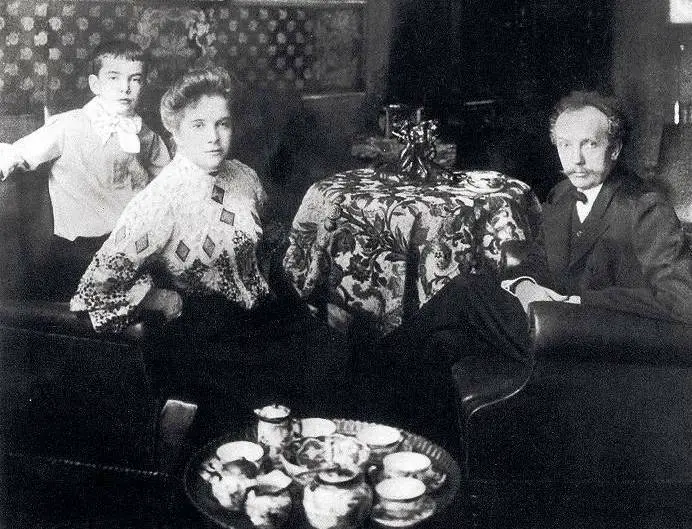
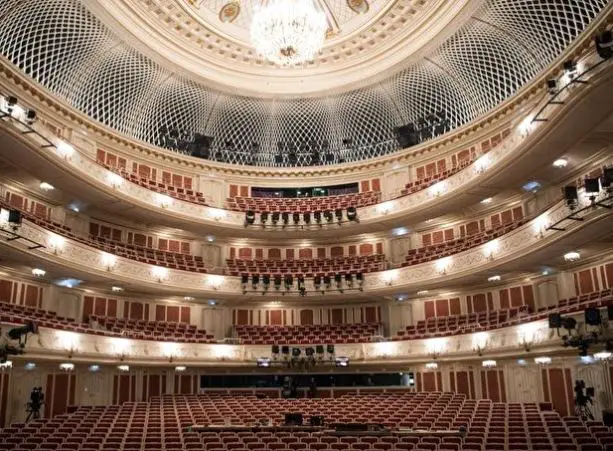
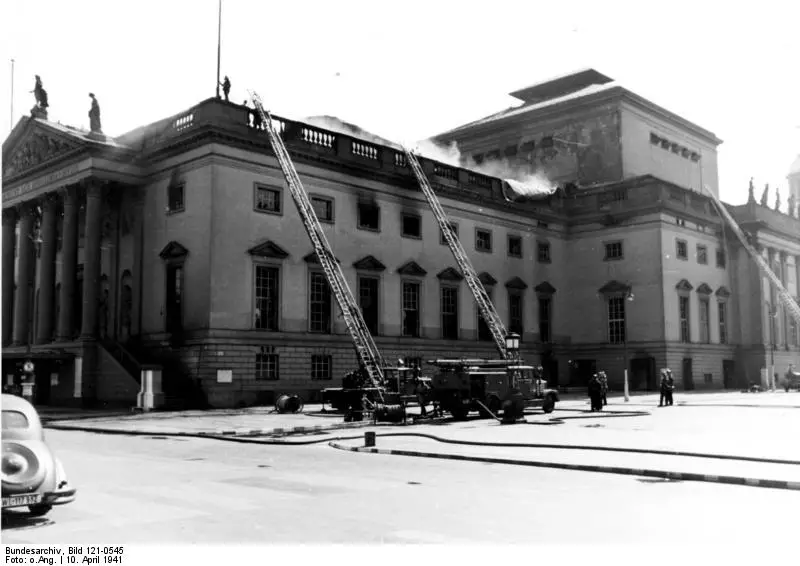
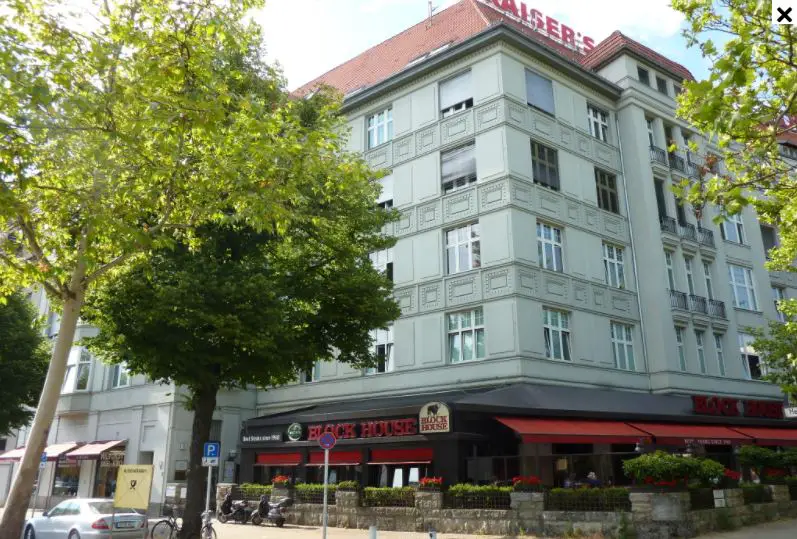
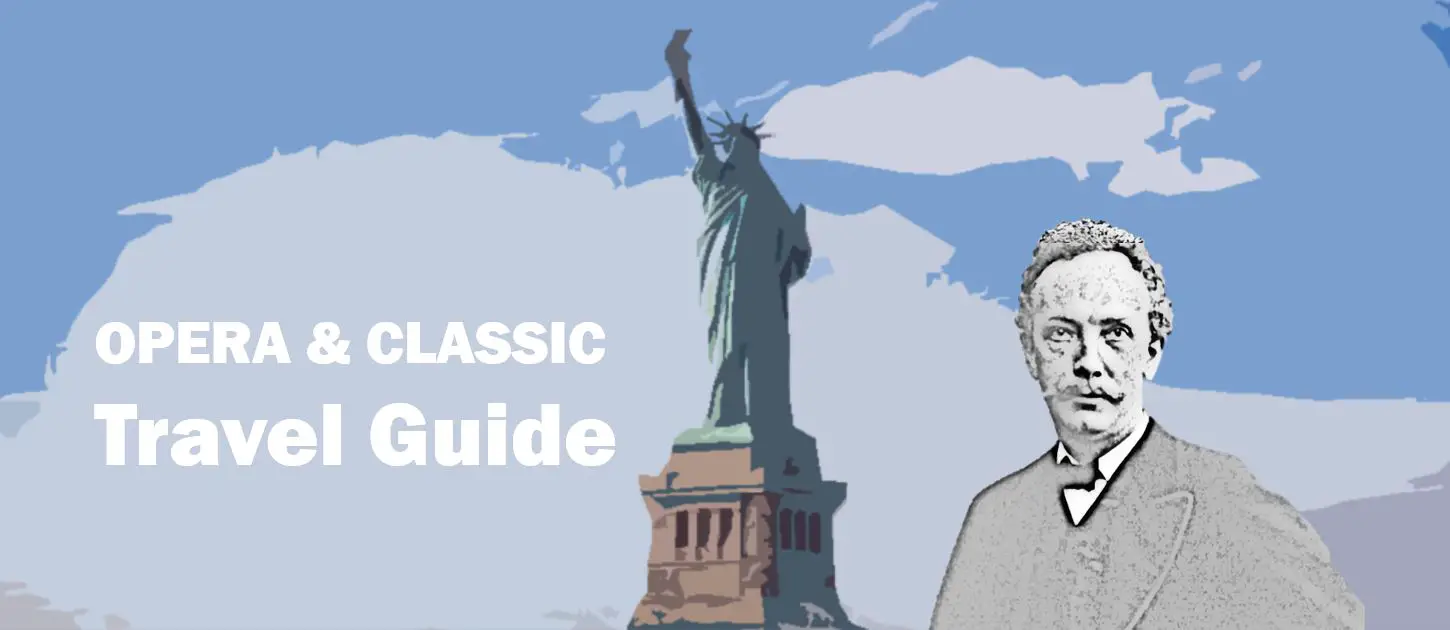
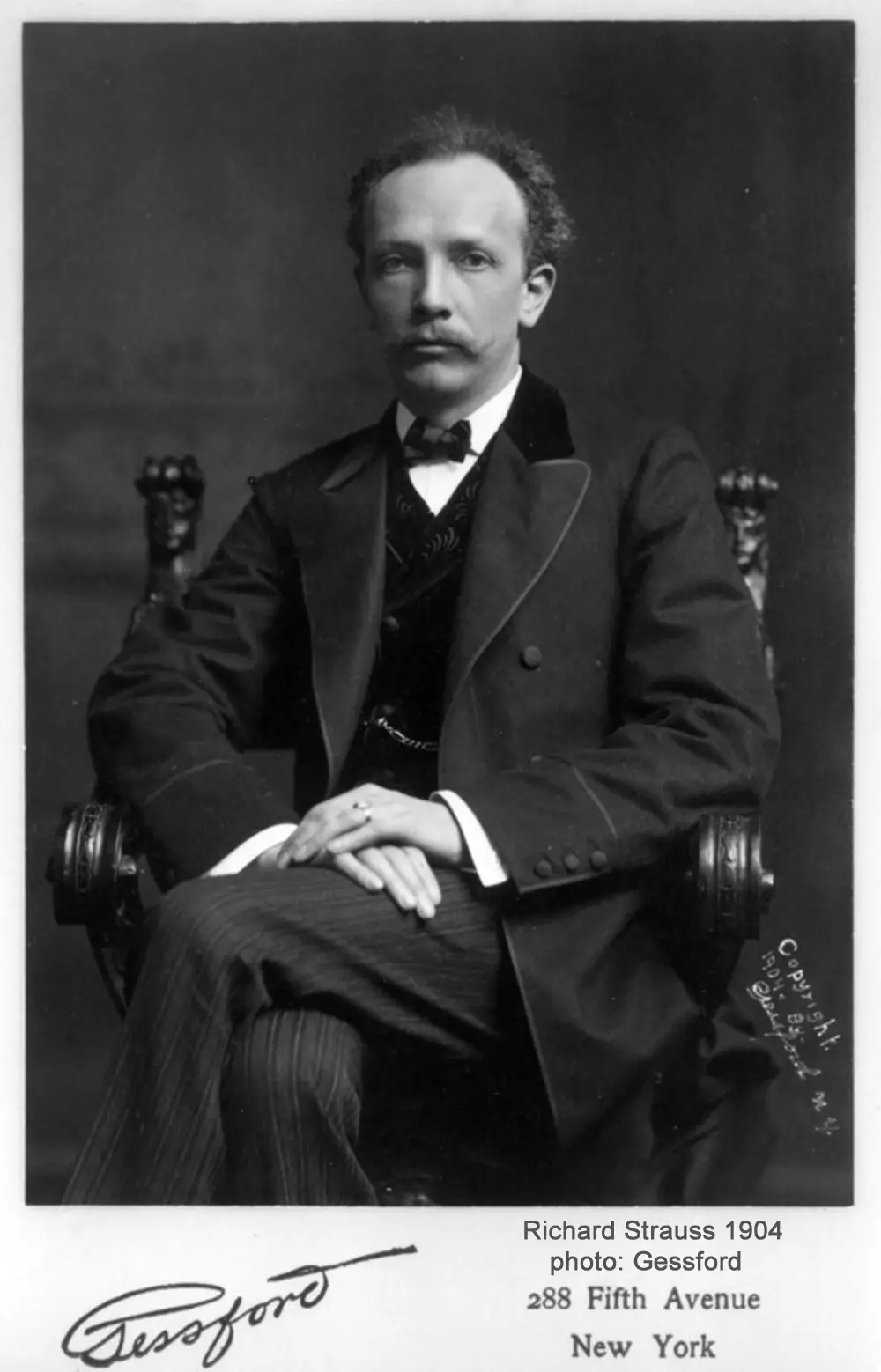
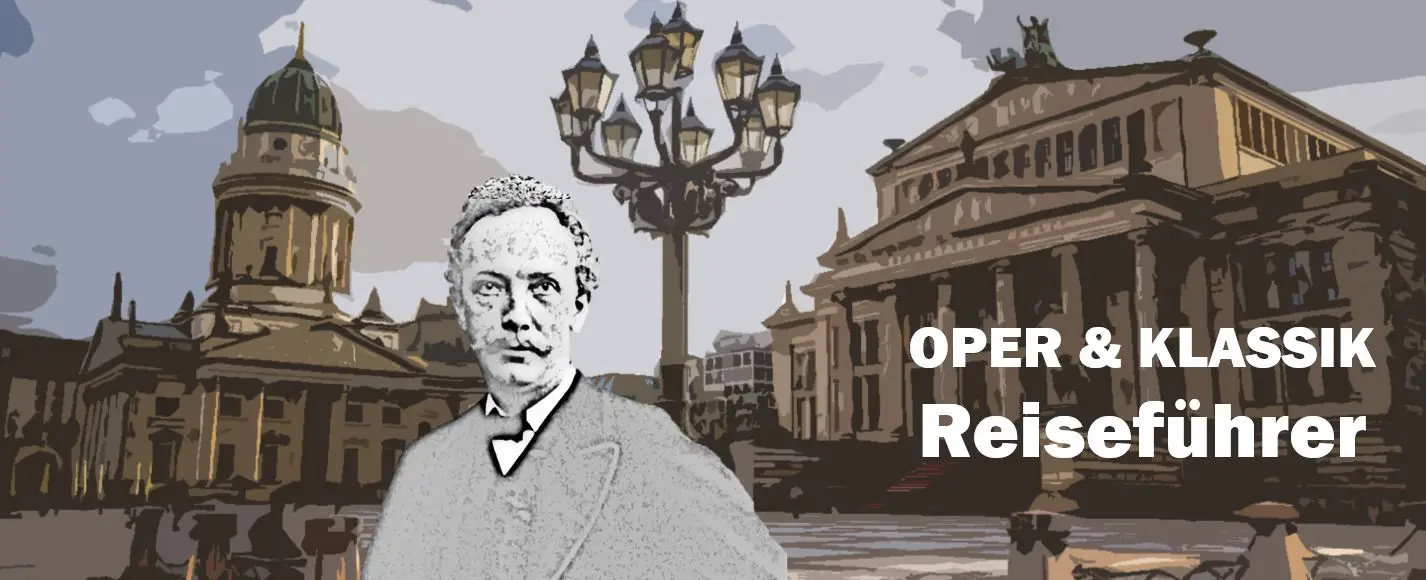
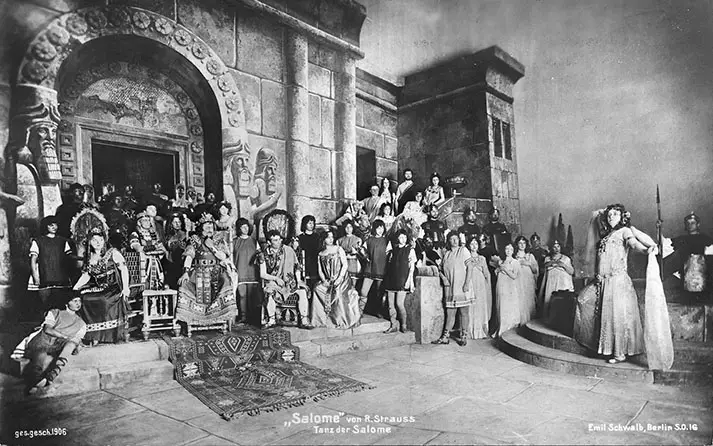
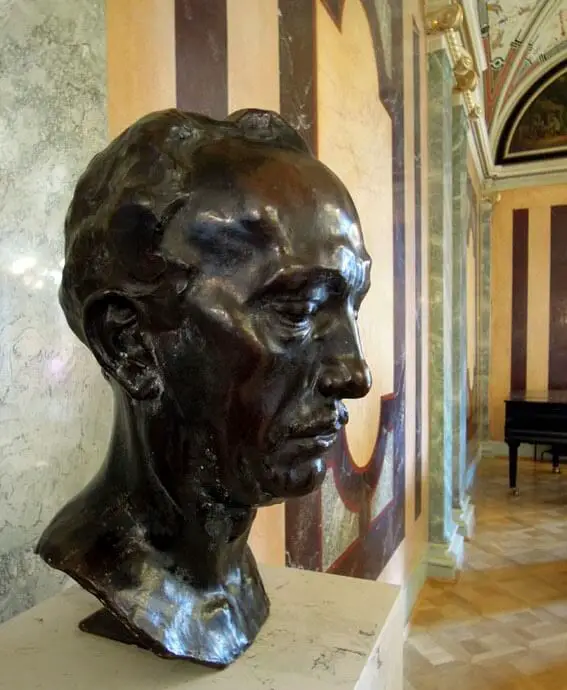
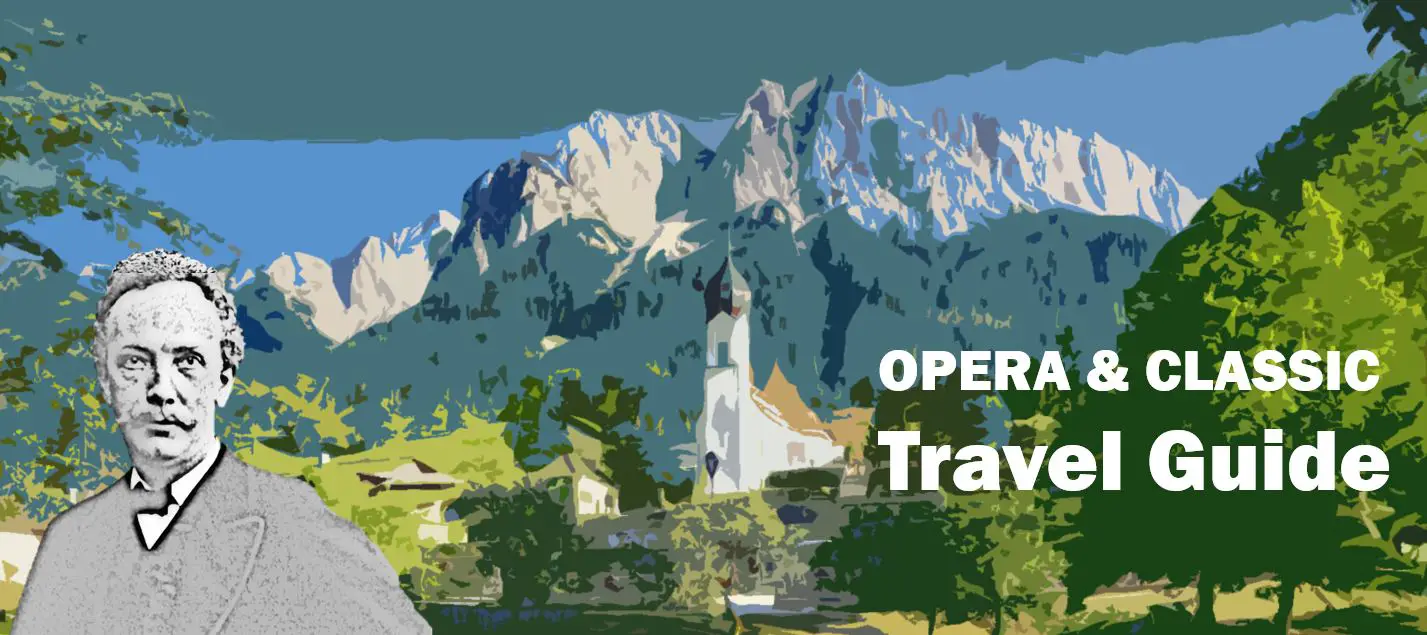
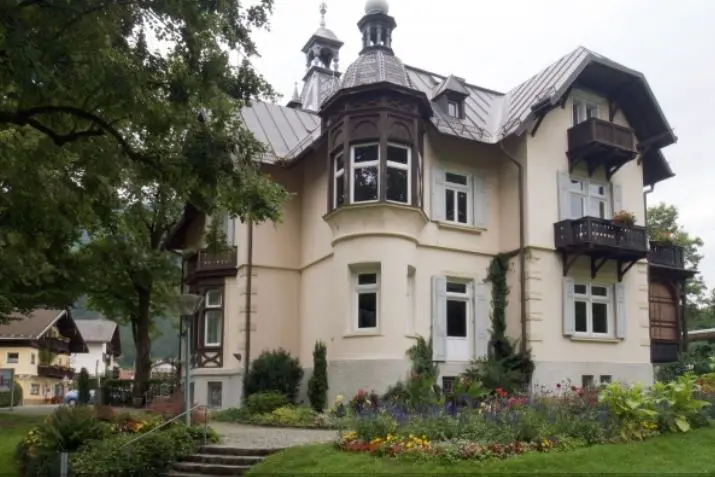
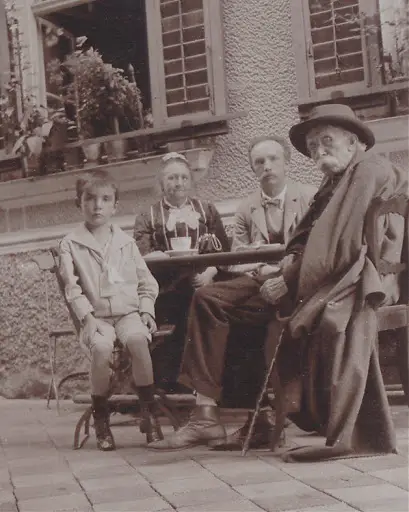
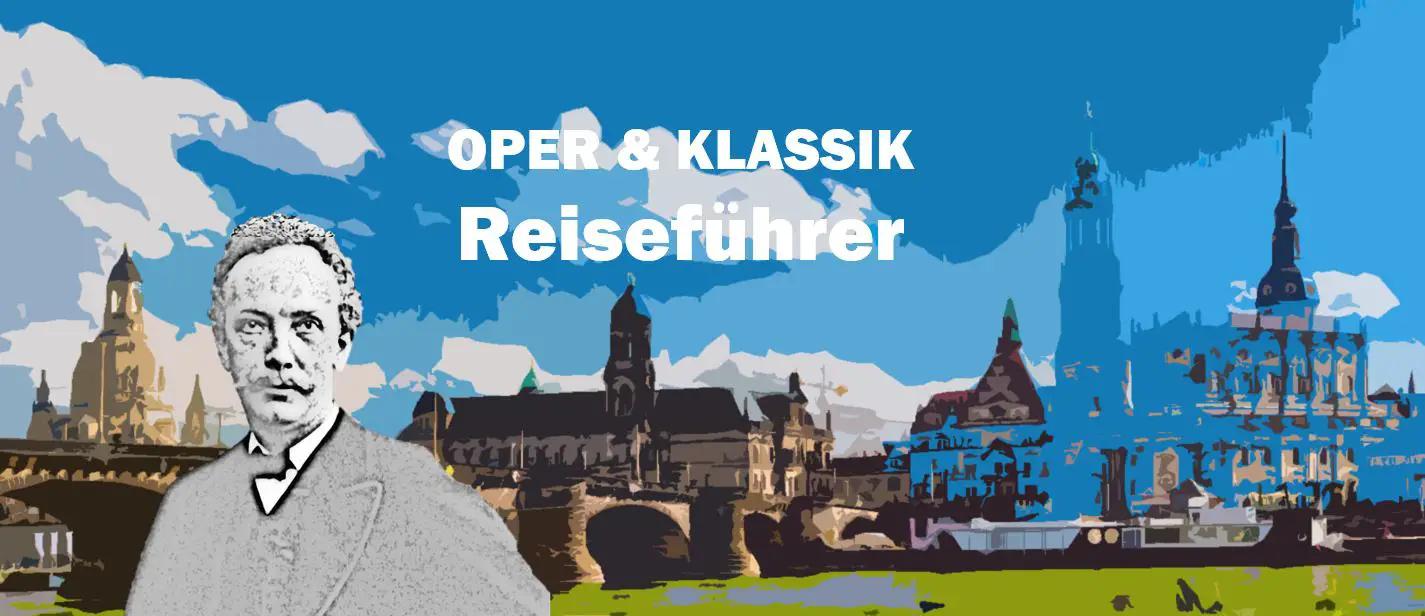
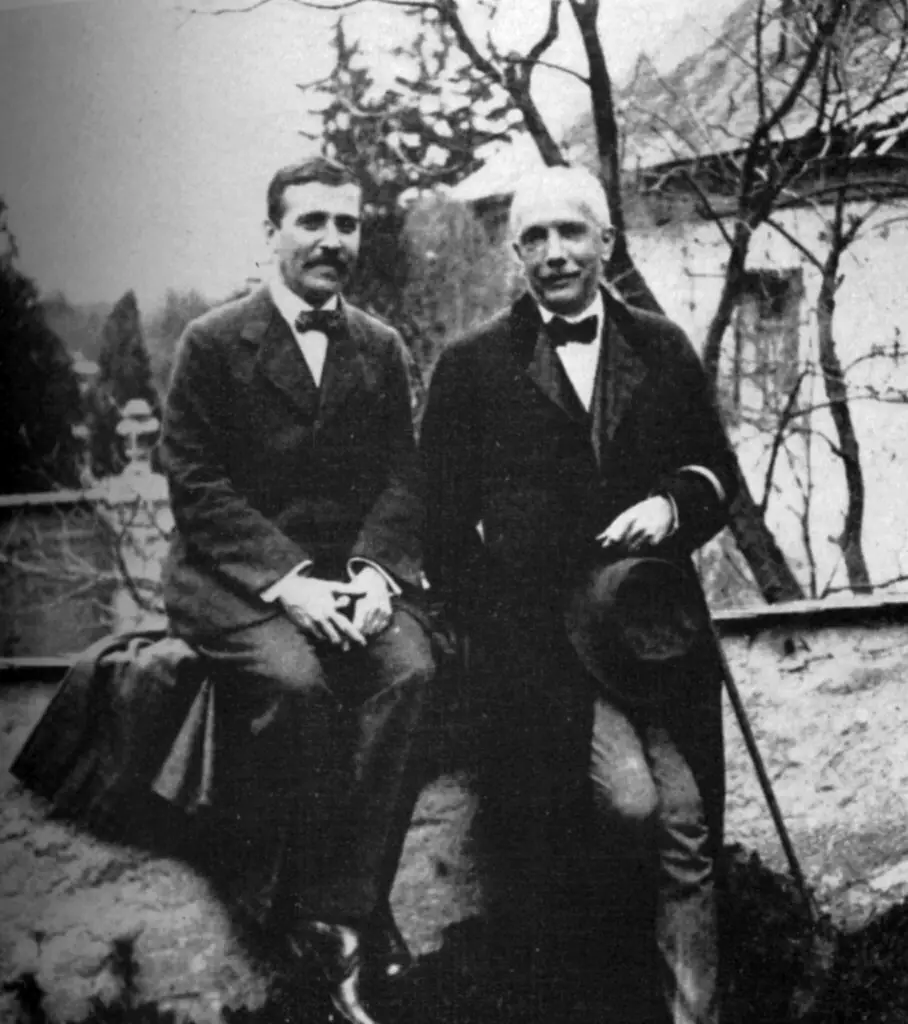
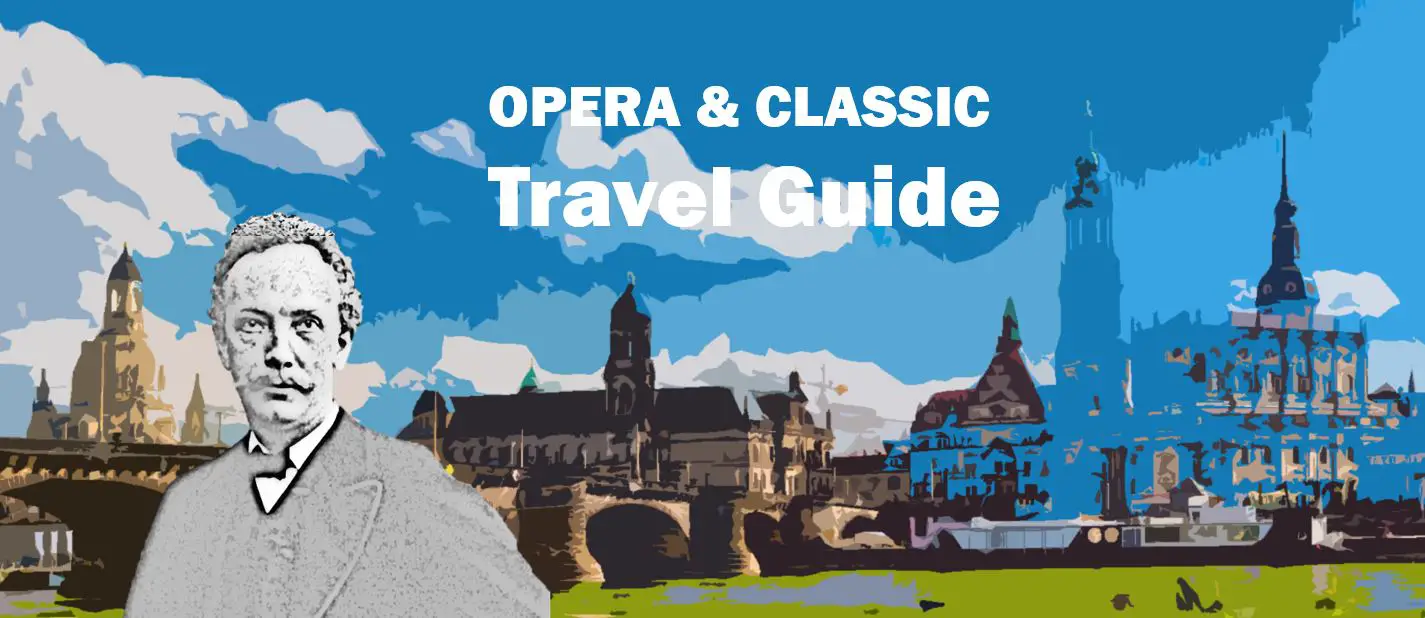
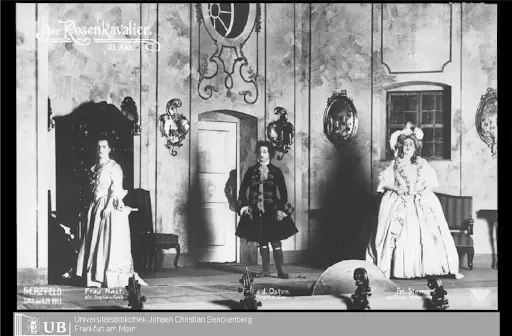
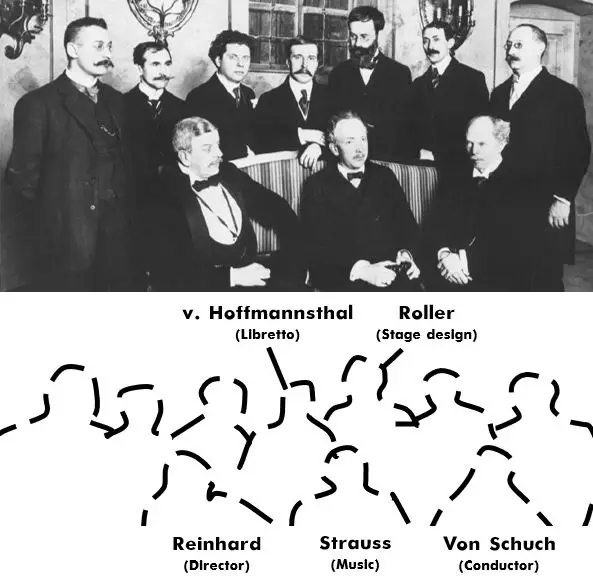
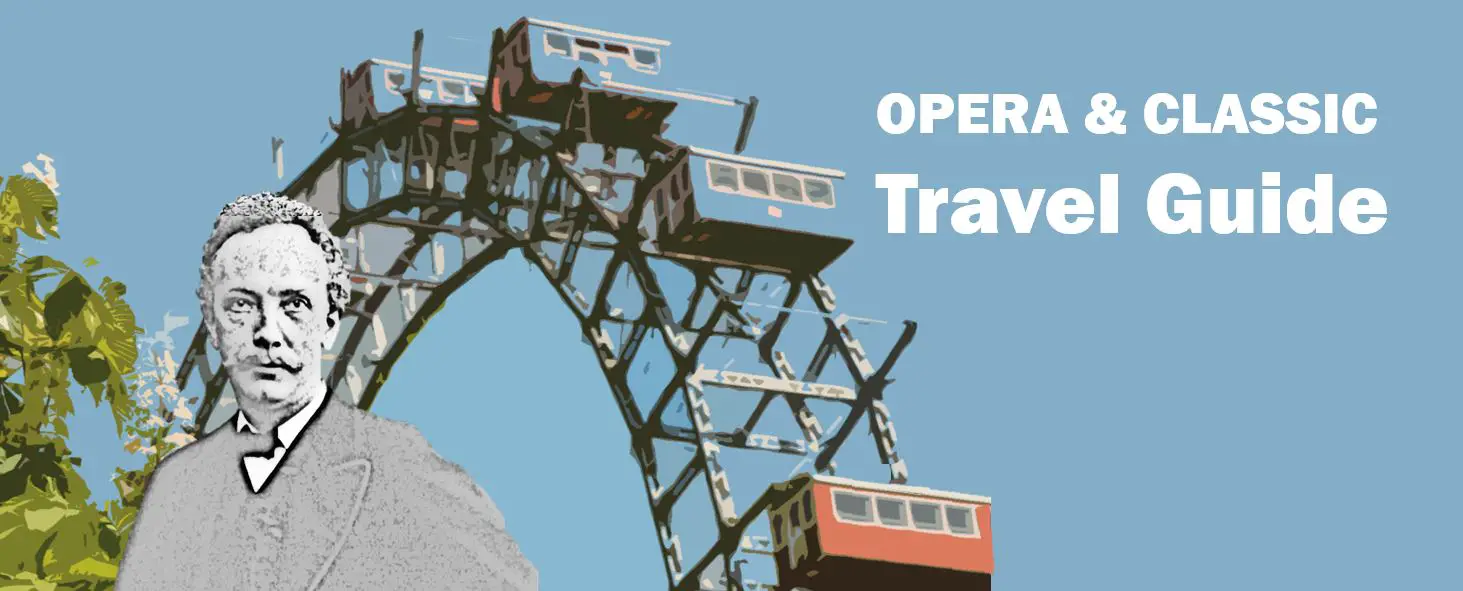
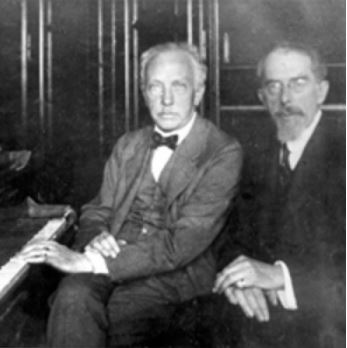

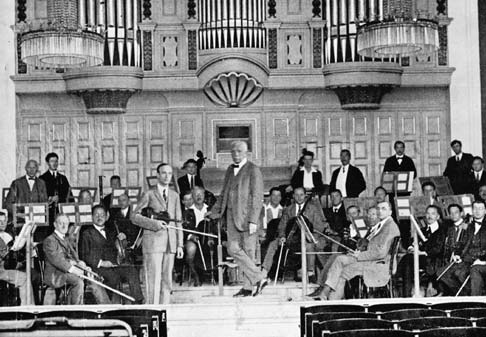
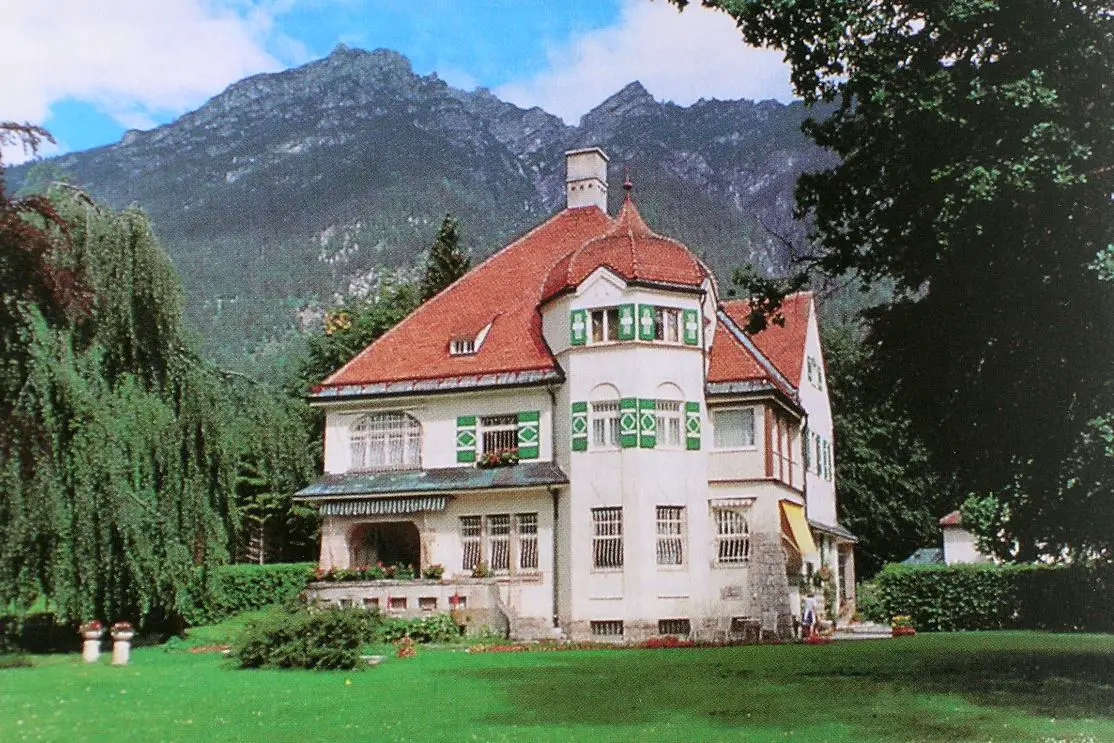
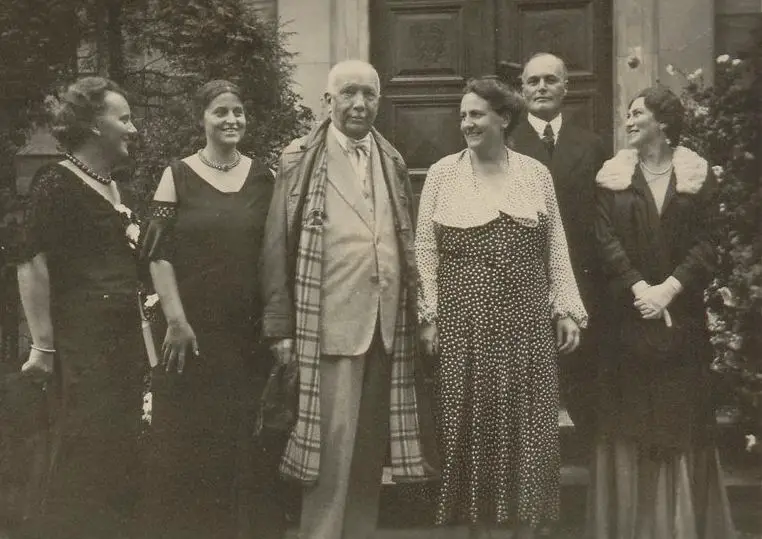
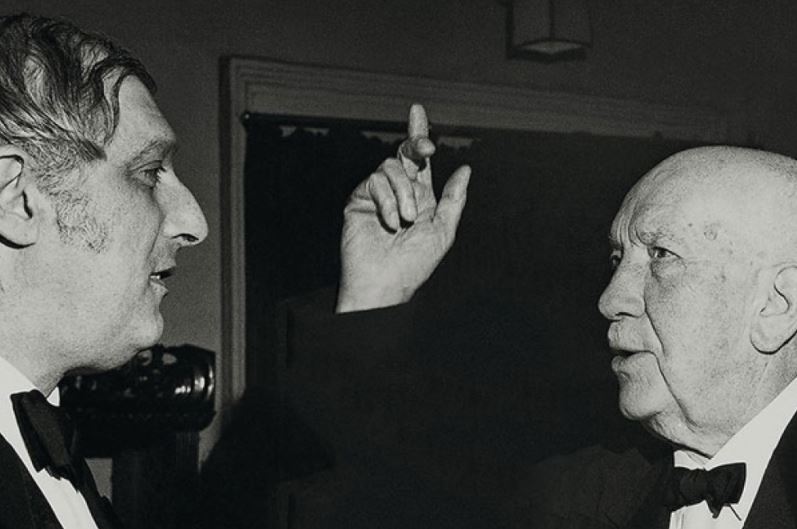
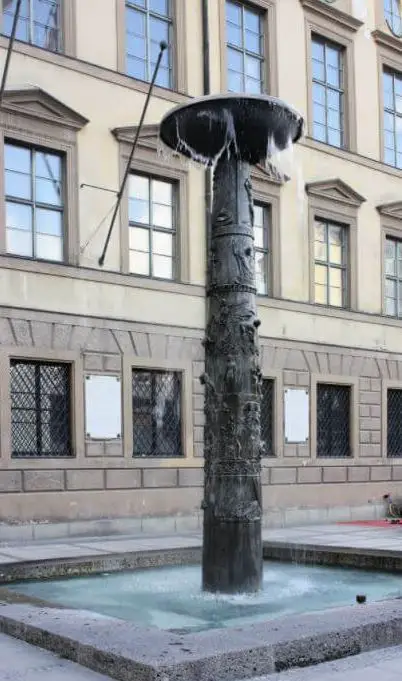
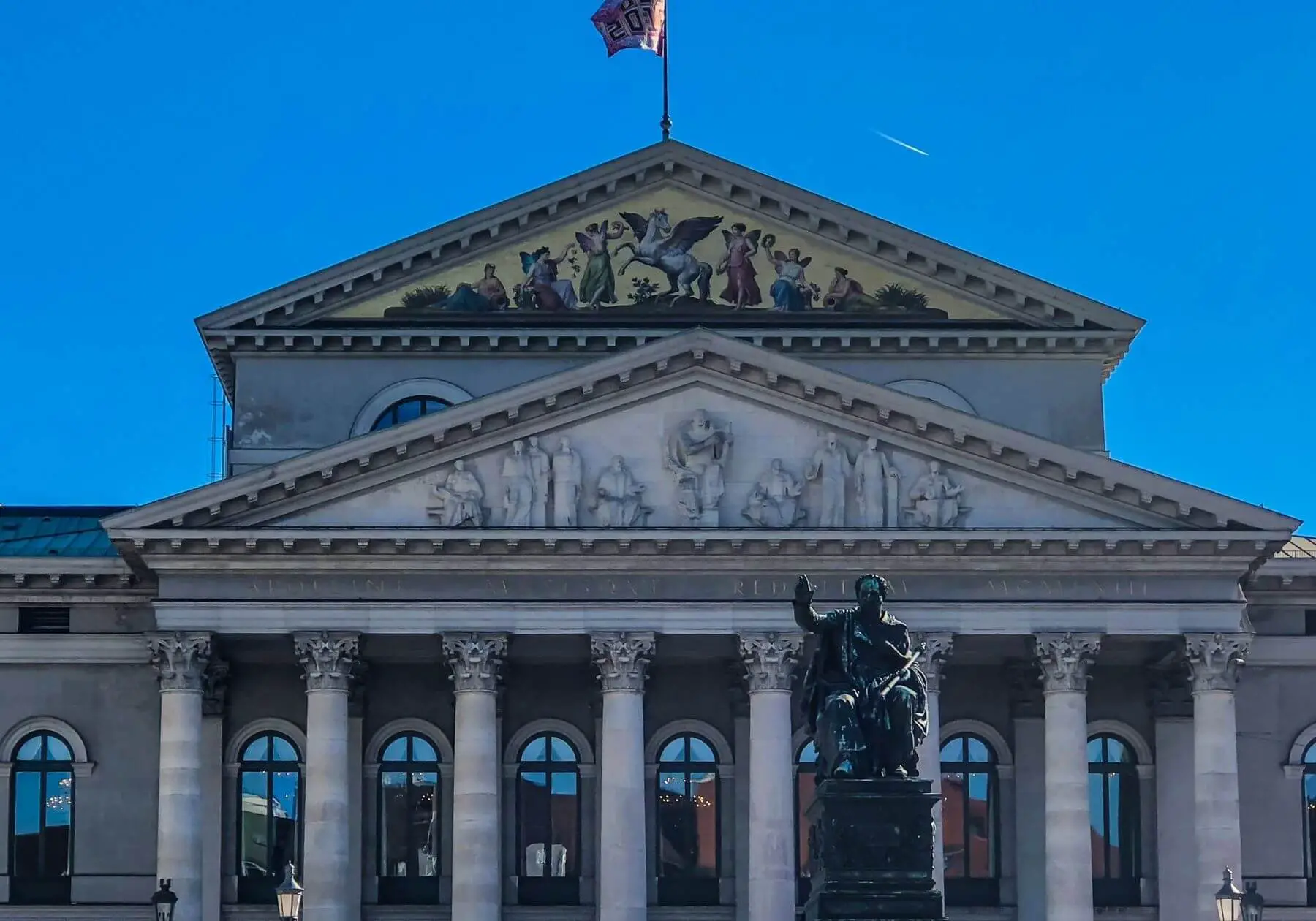

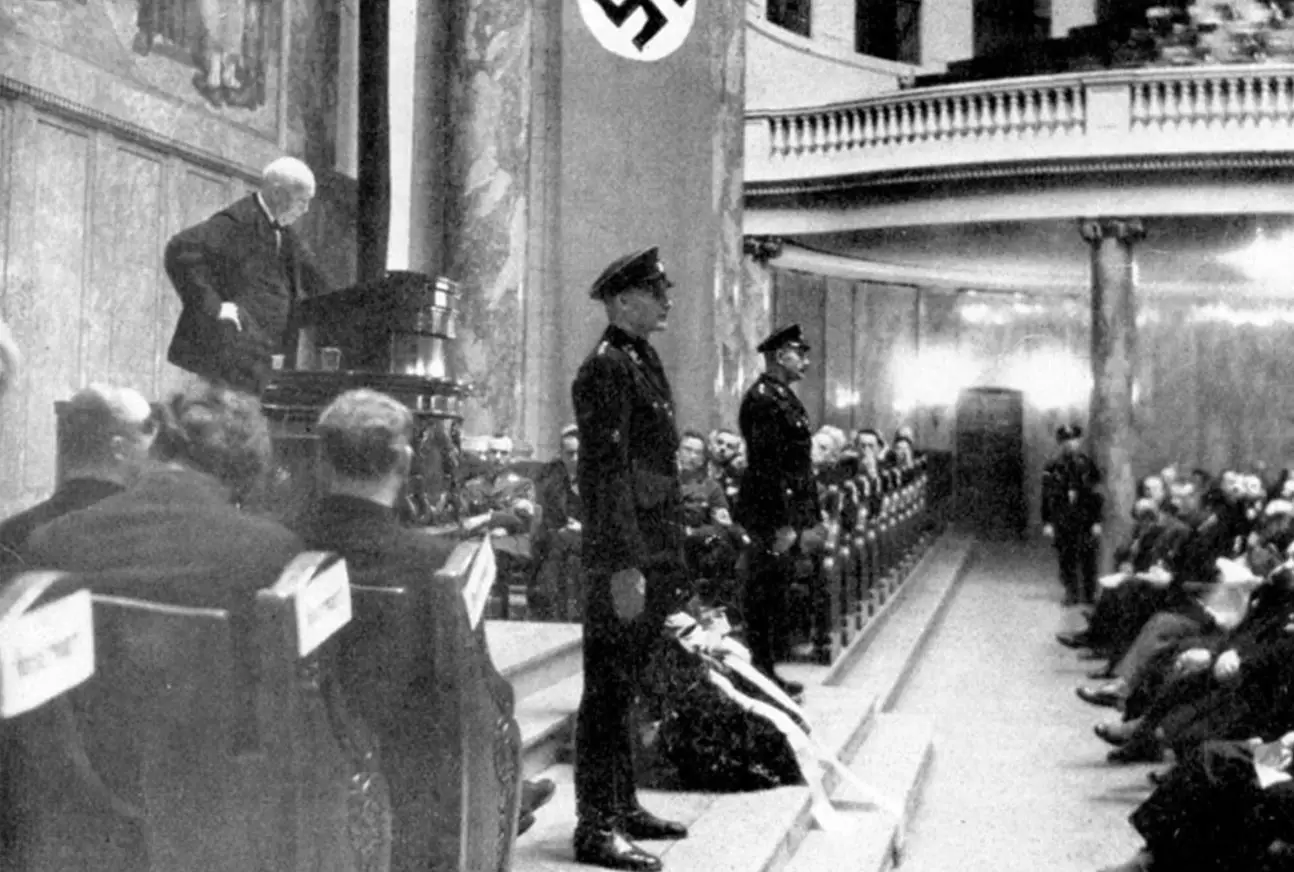

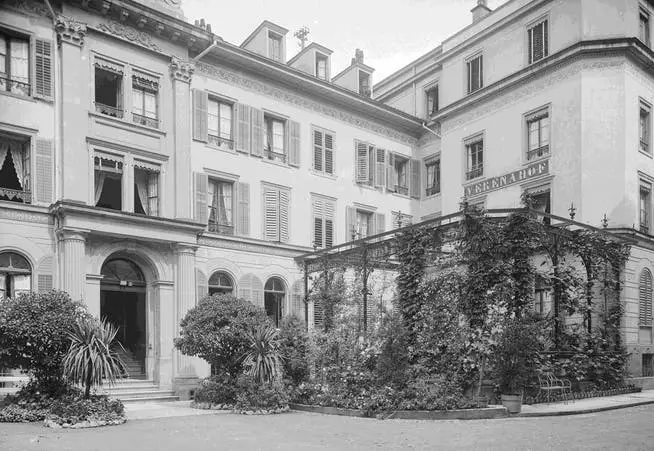
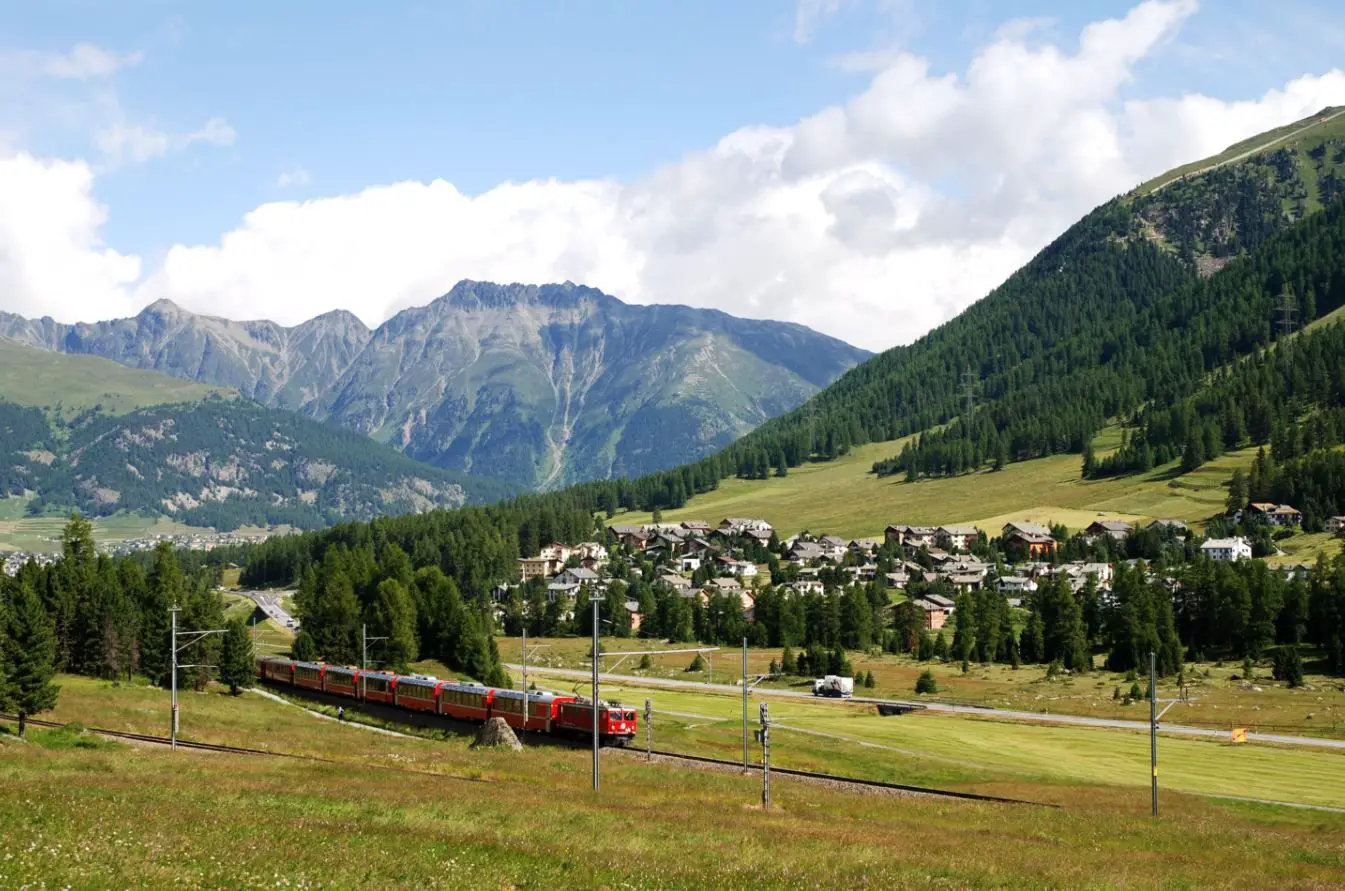
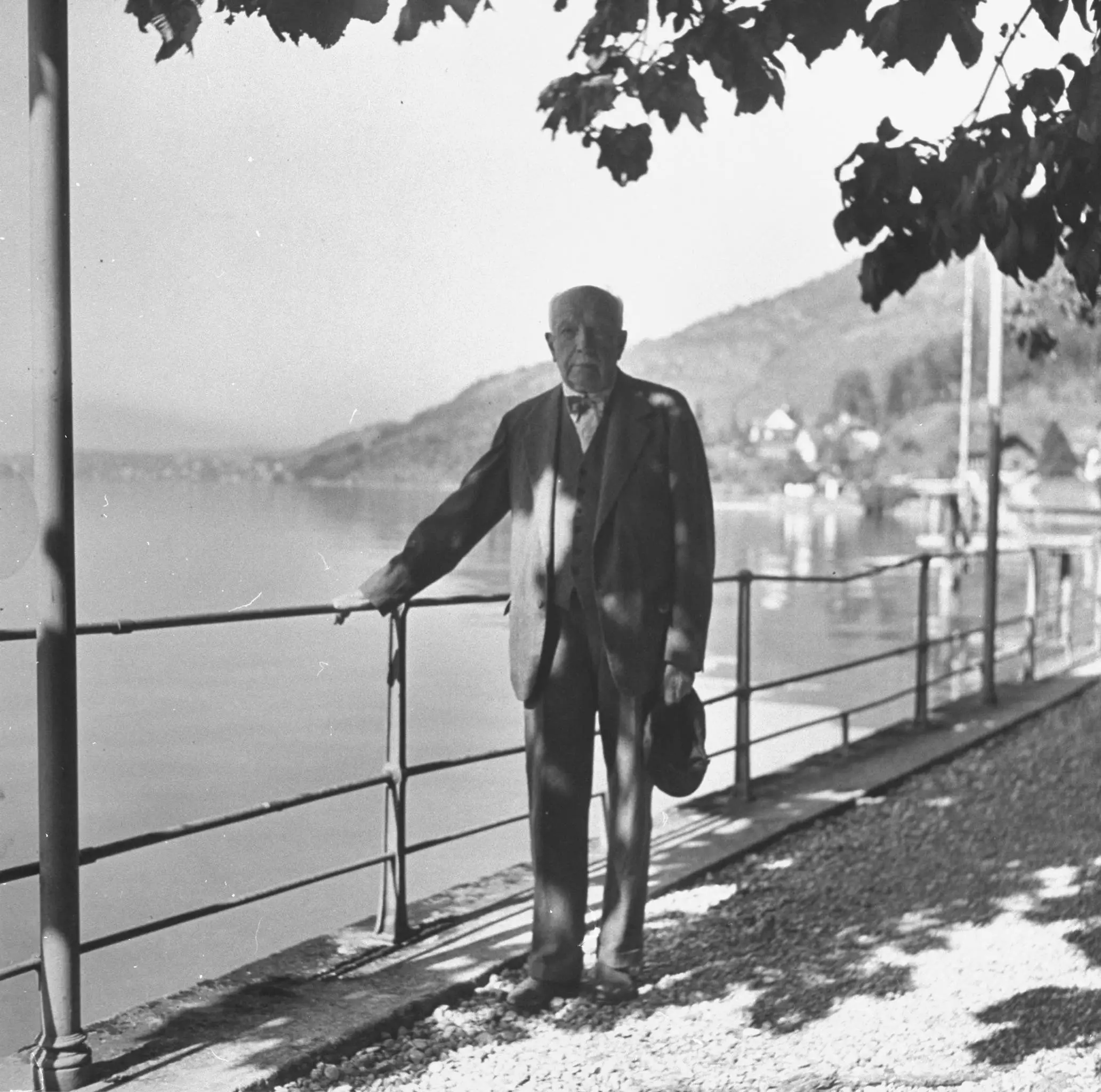
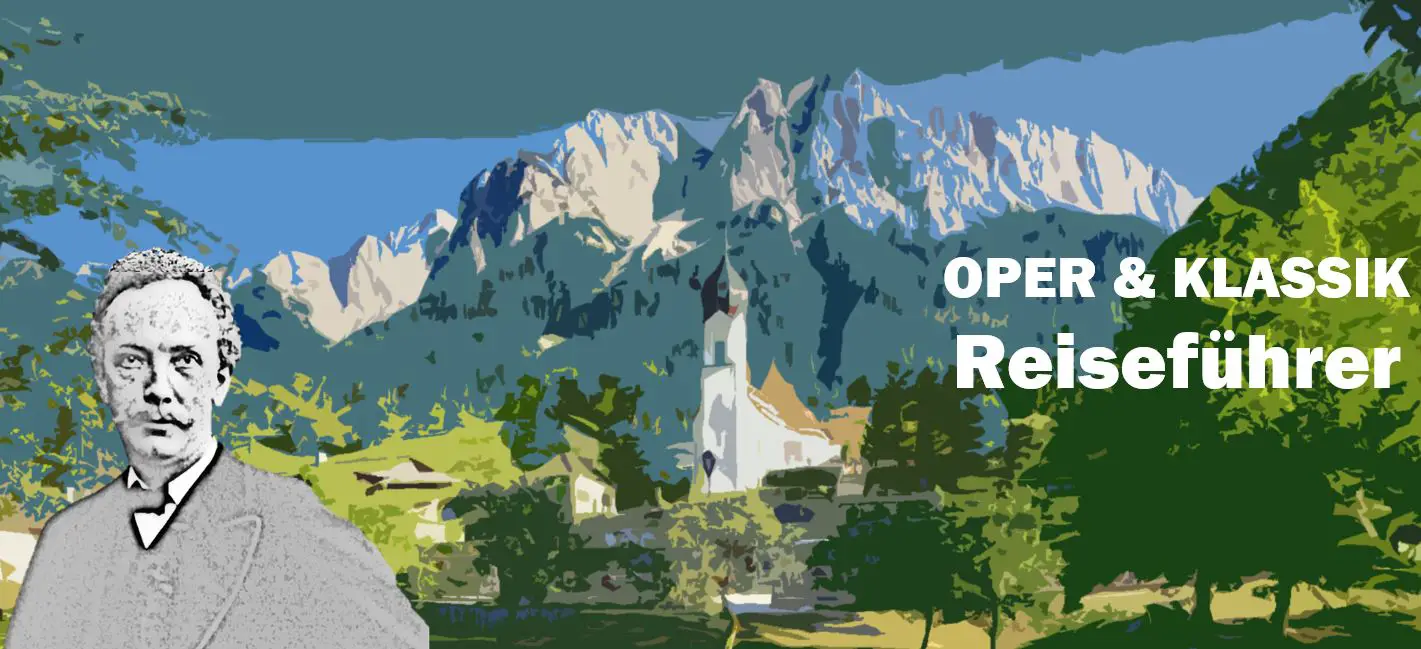




The house shown as Strauss’ villa in Garmisch-Partenkirche is not Strauss’ villa.